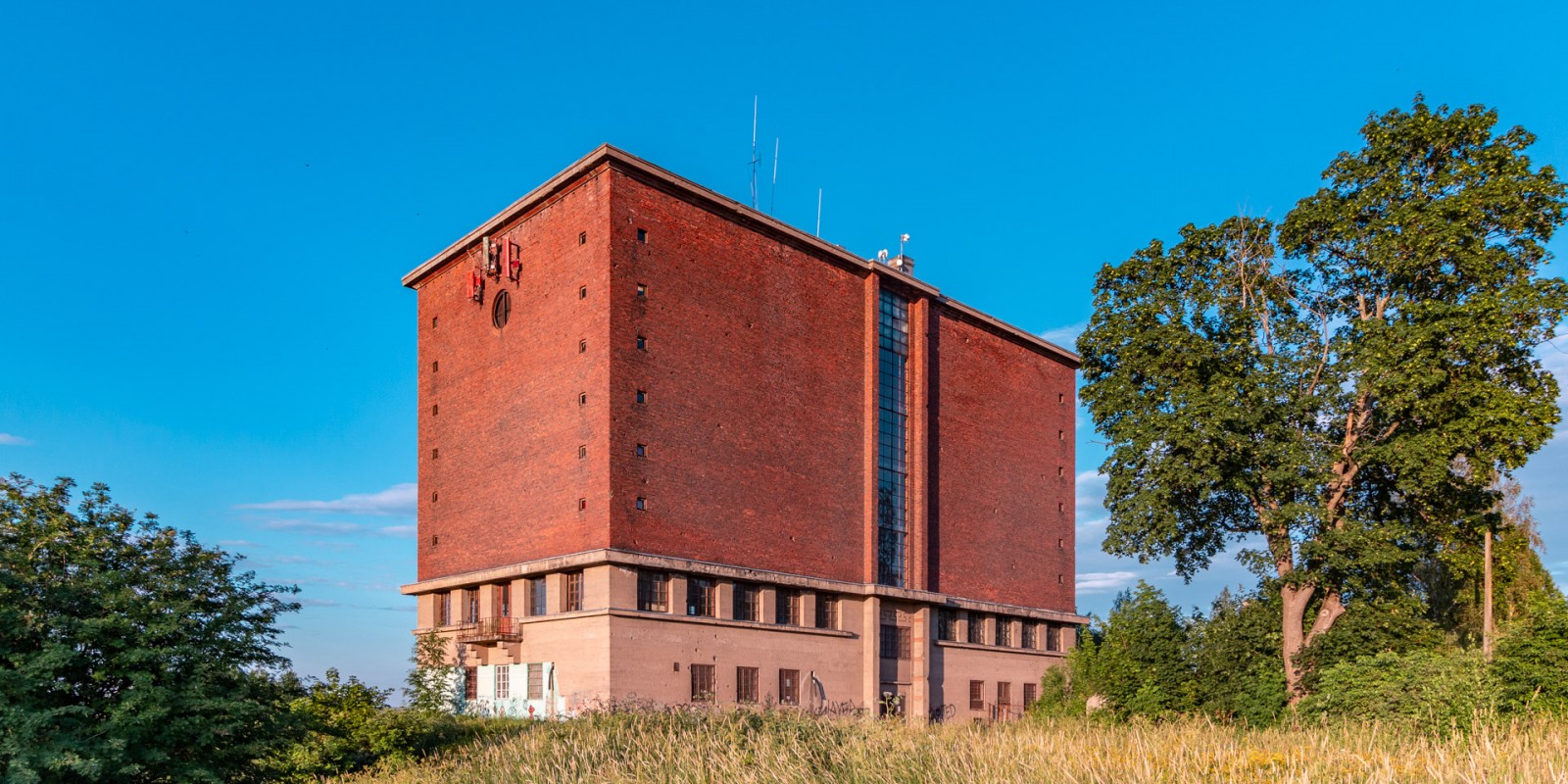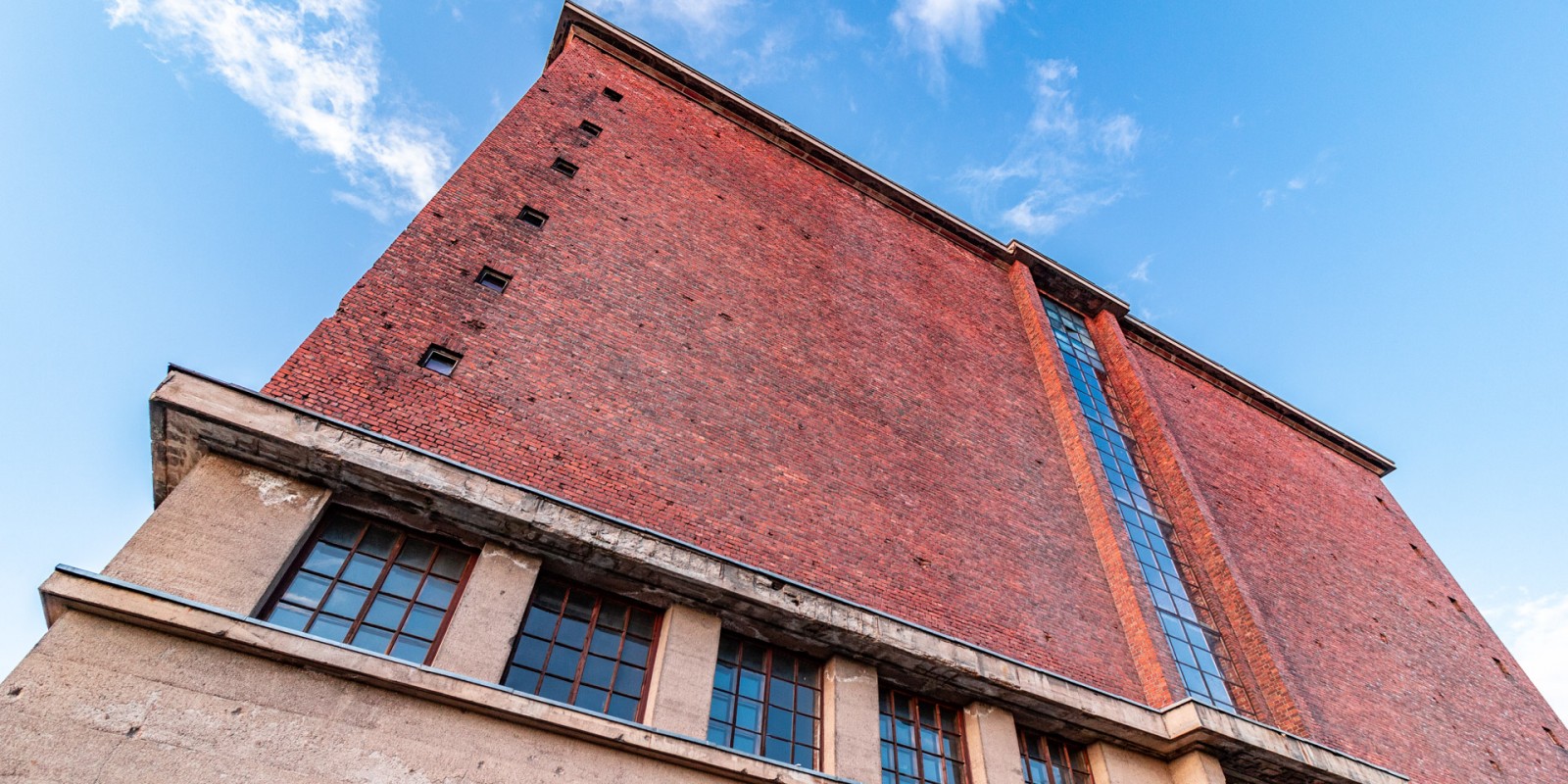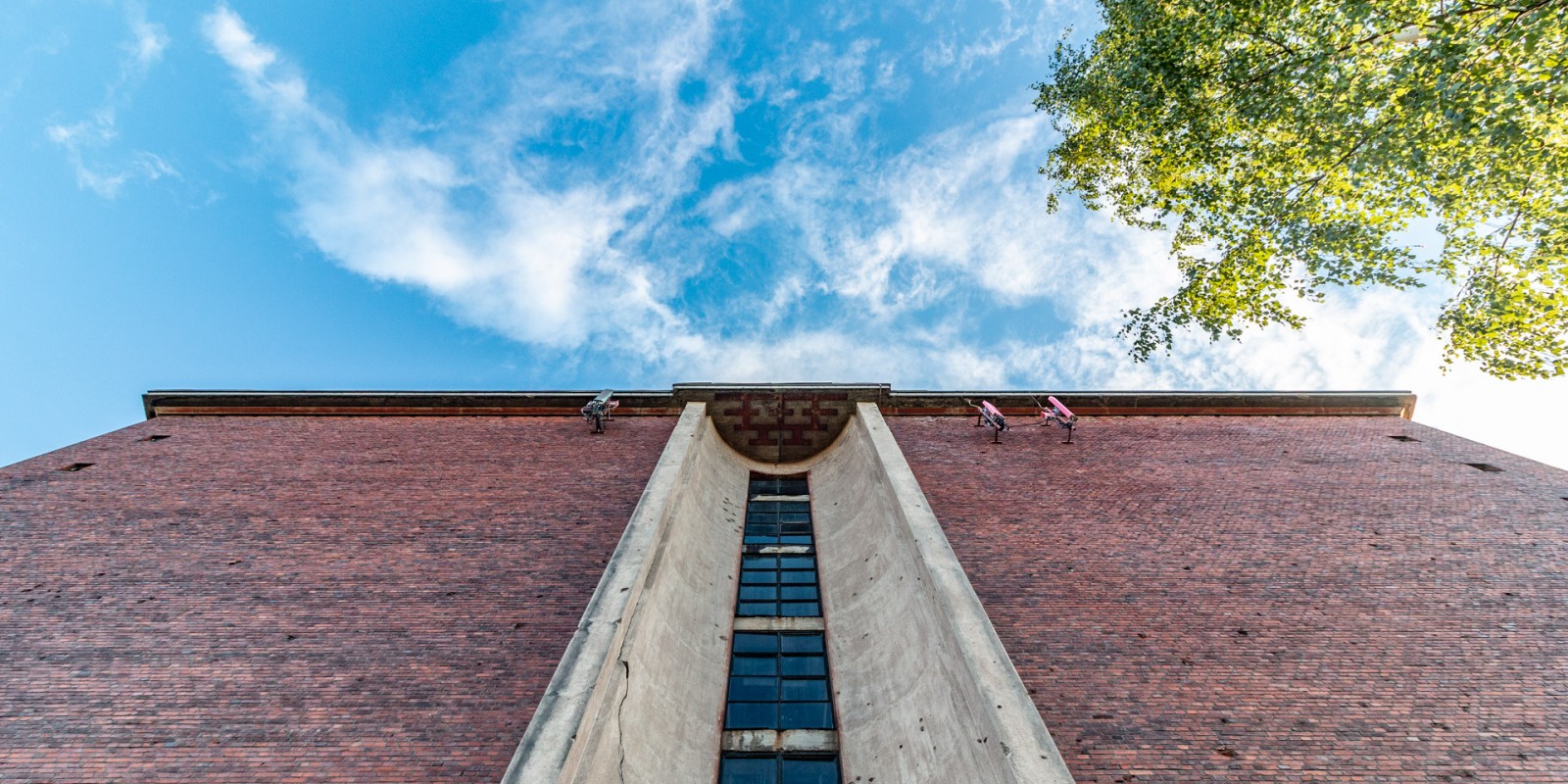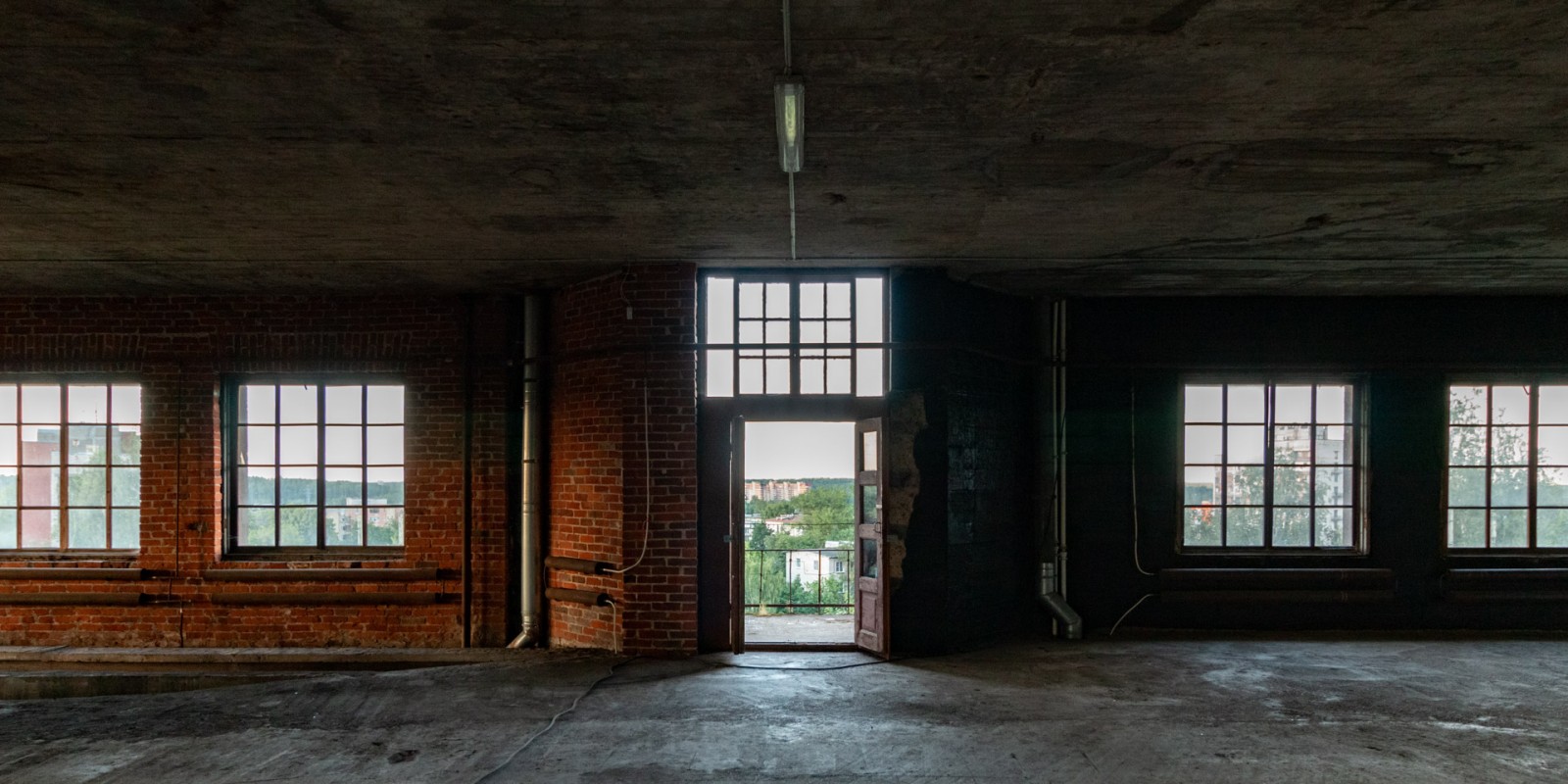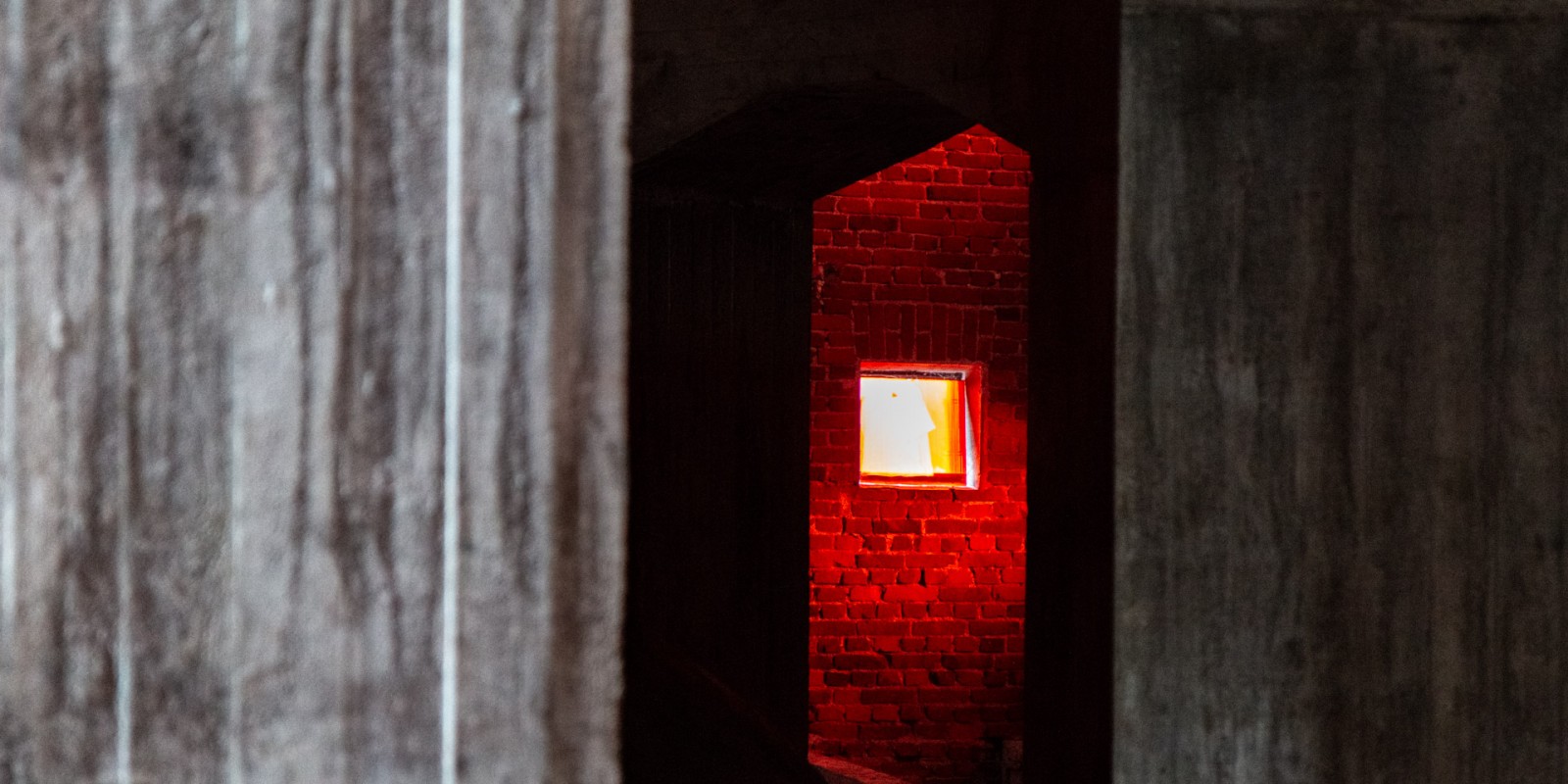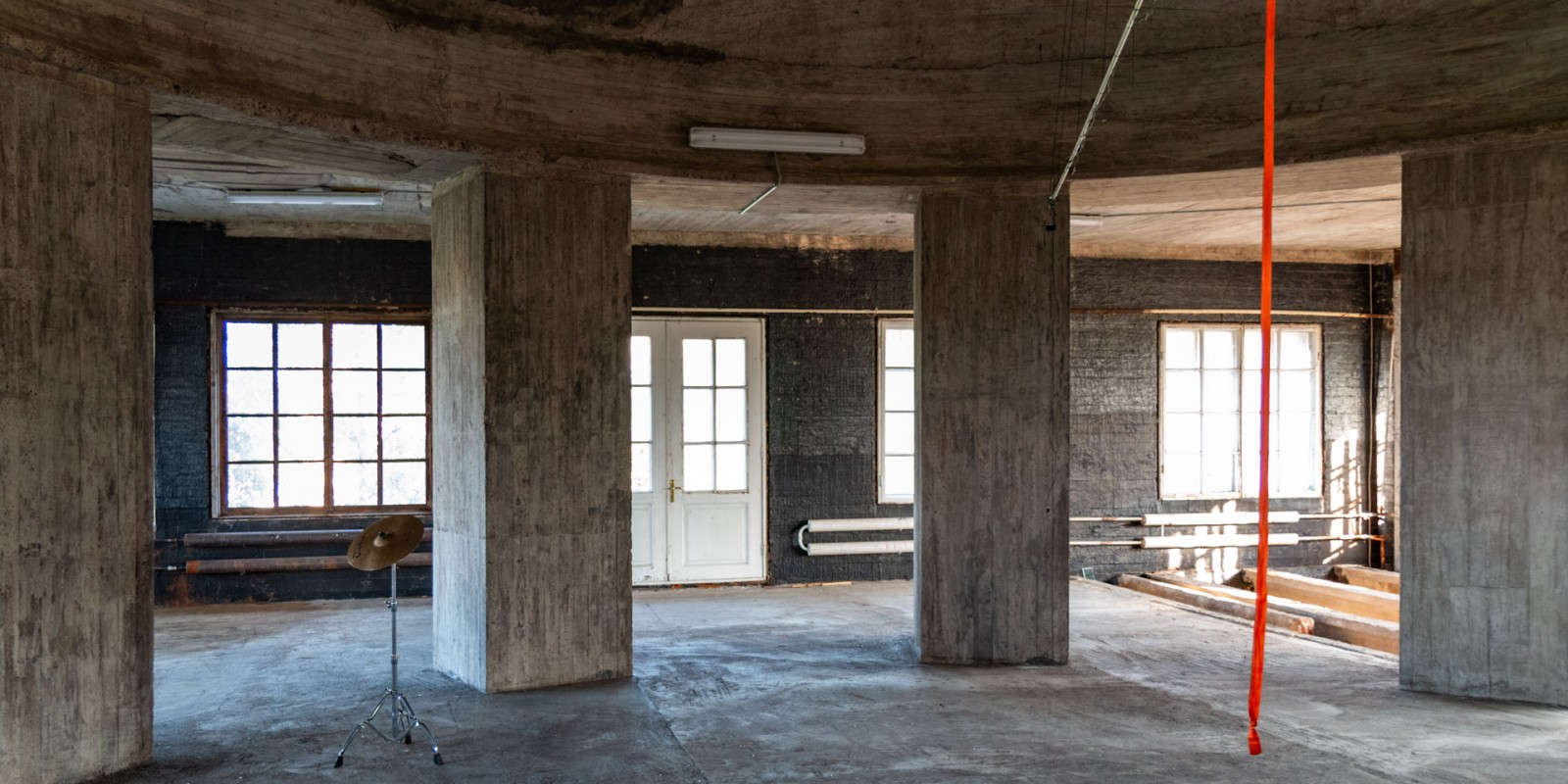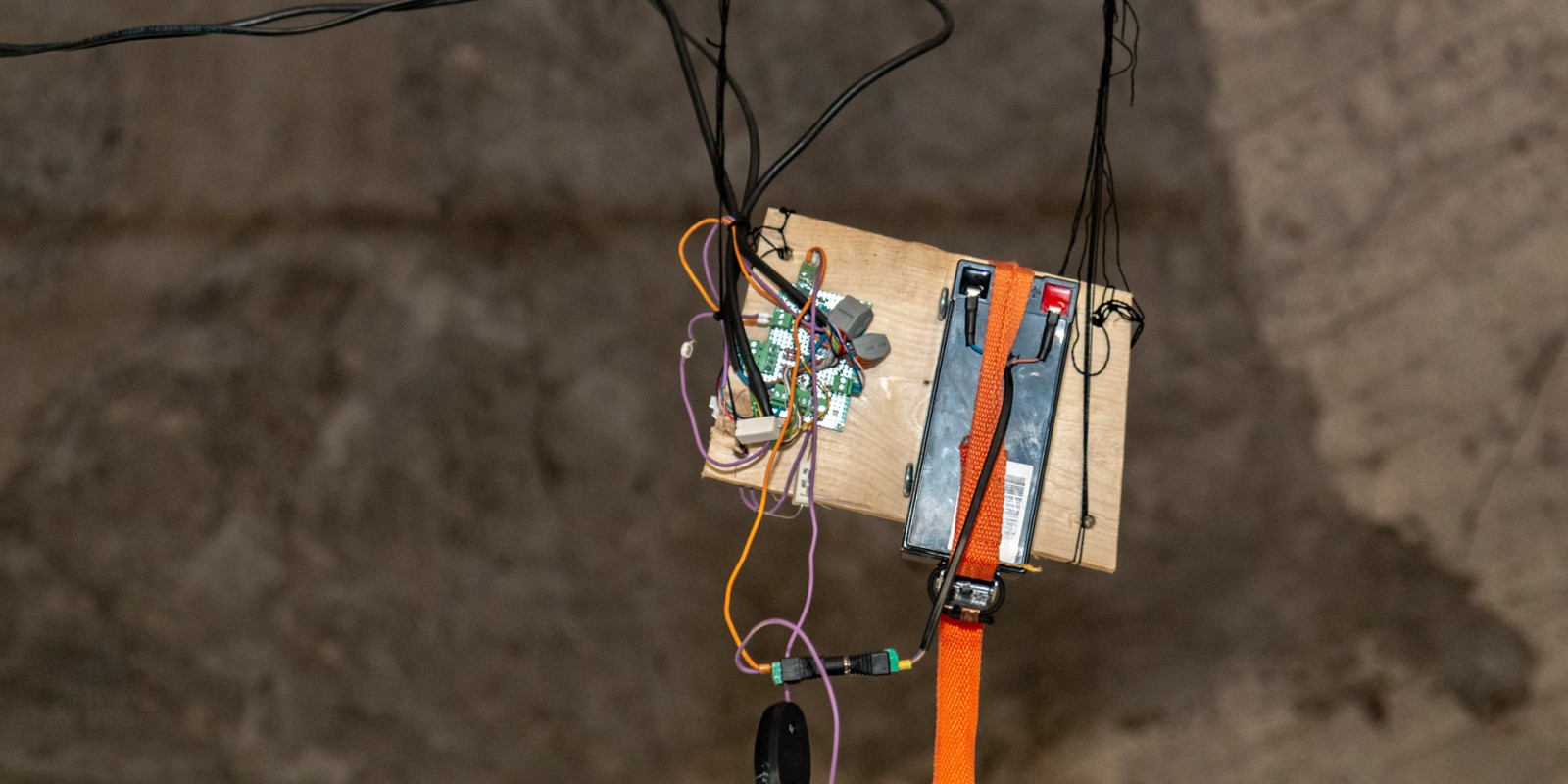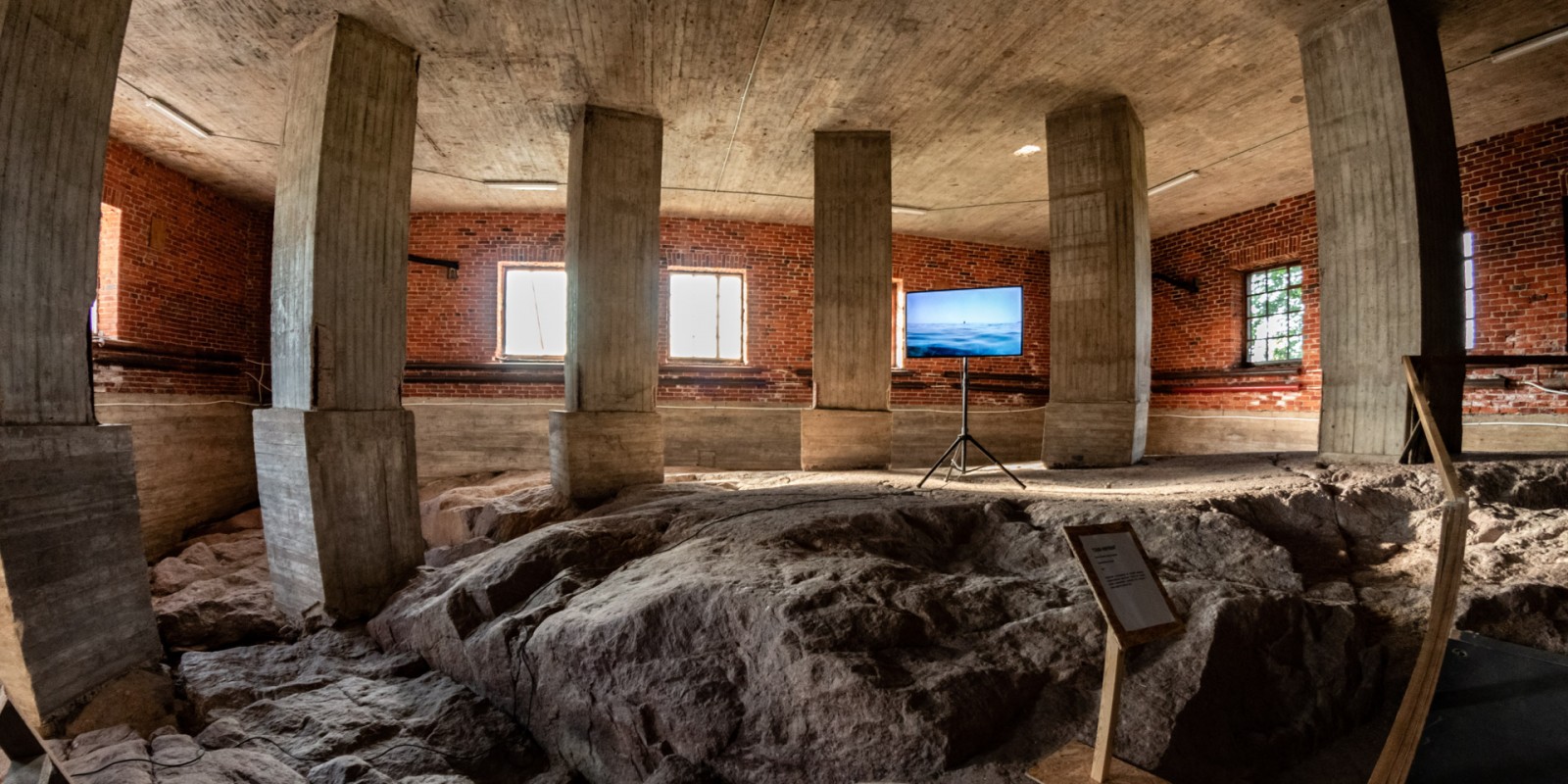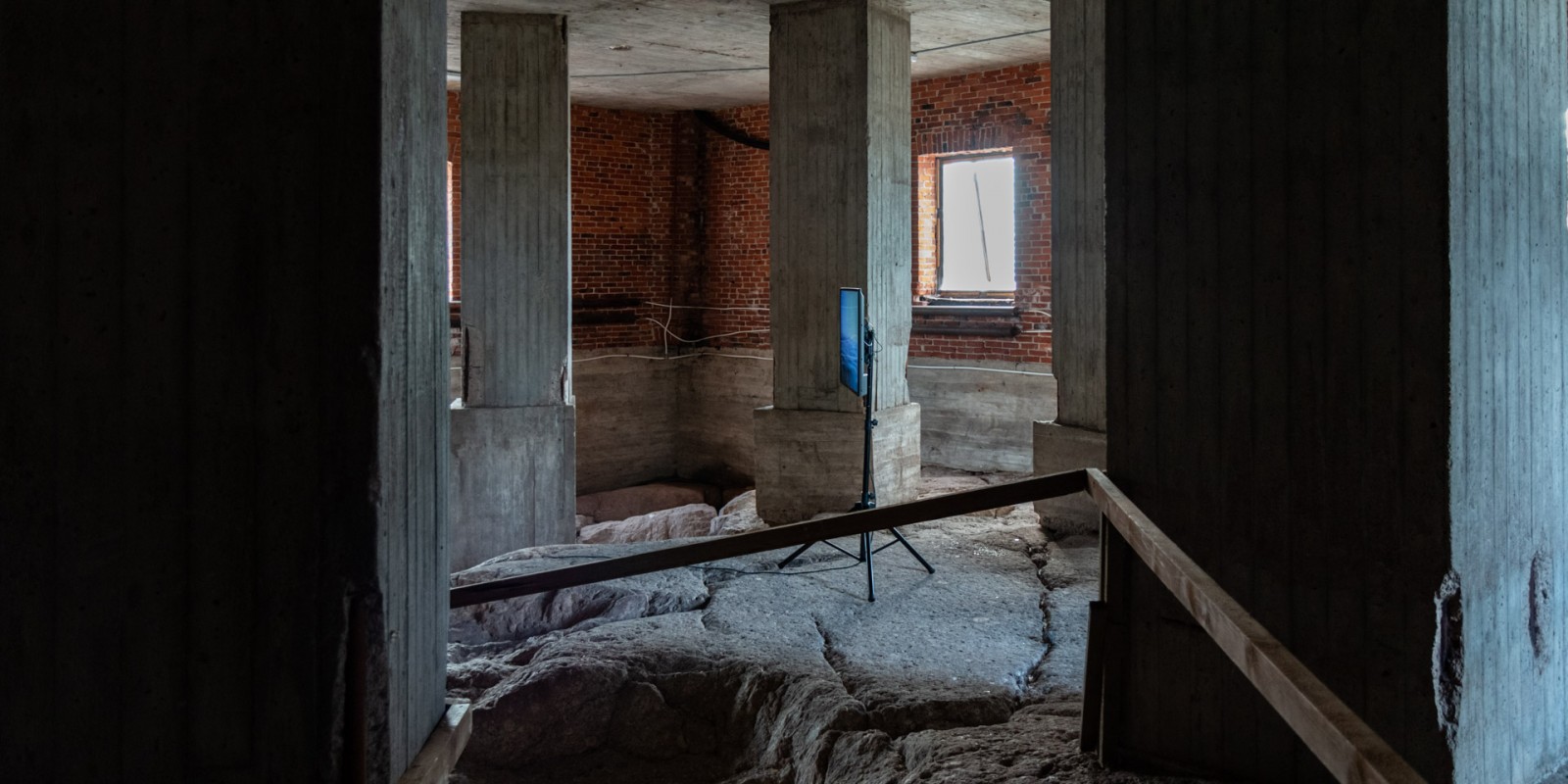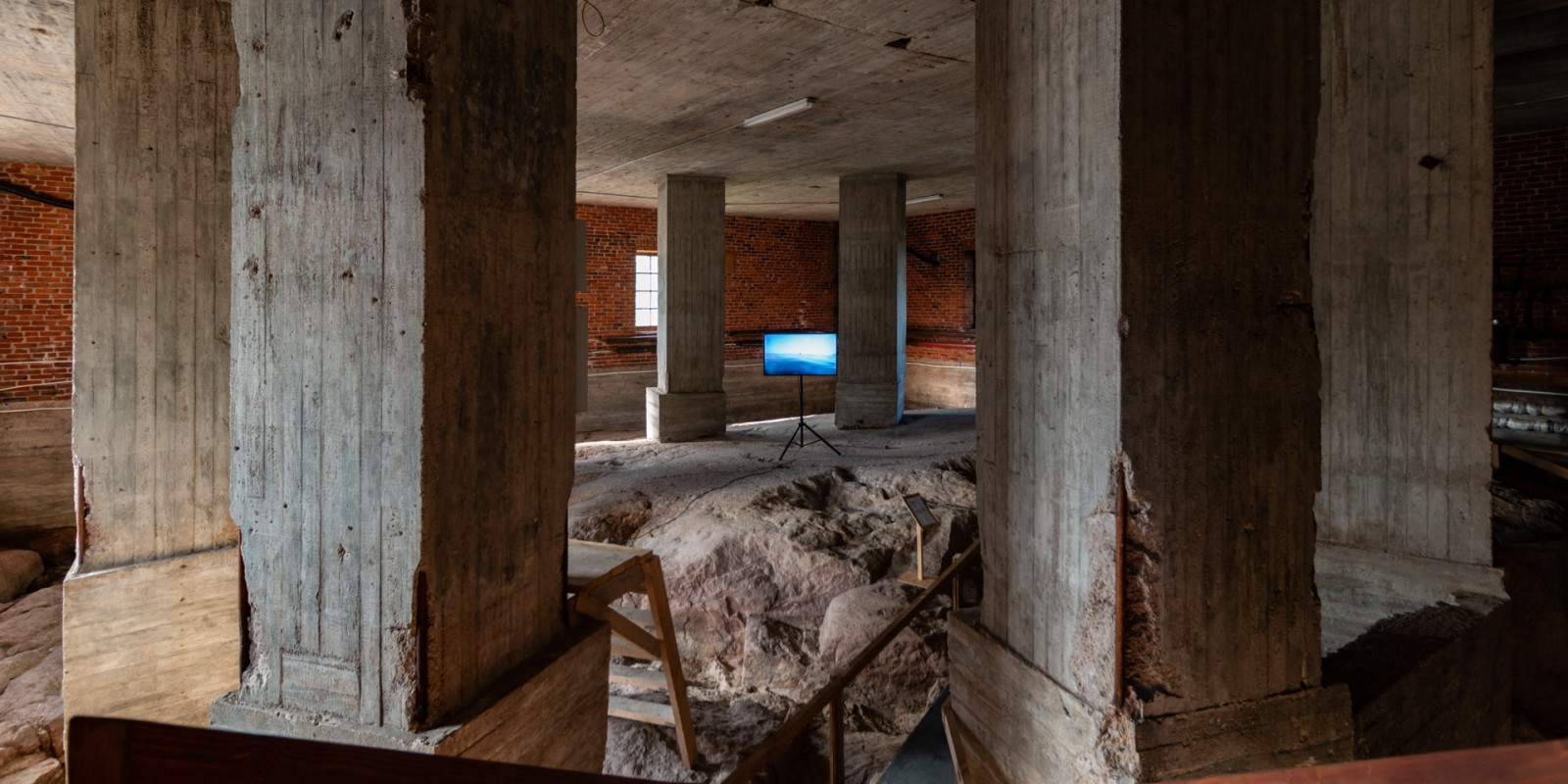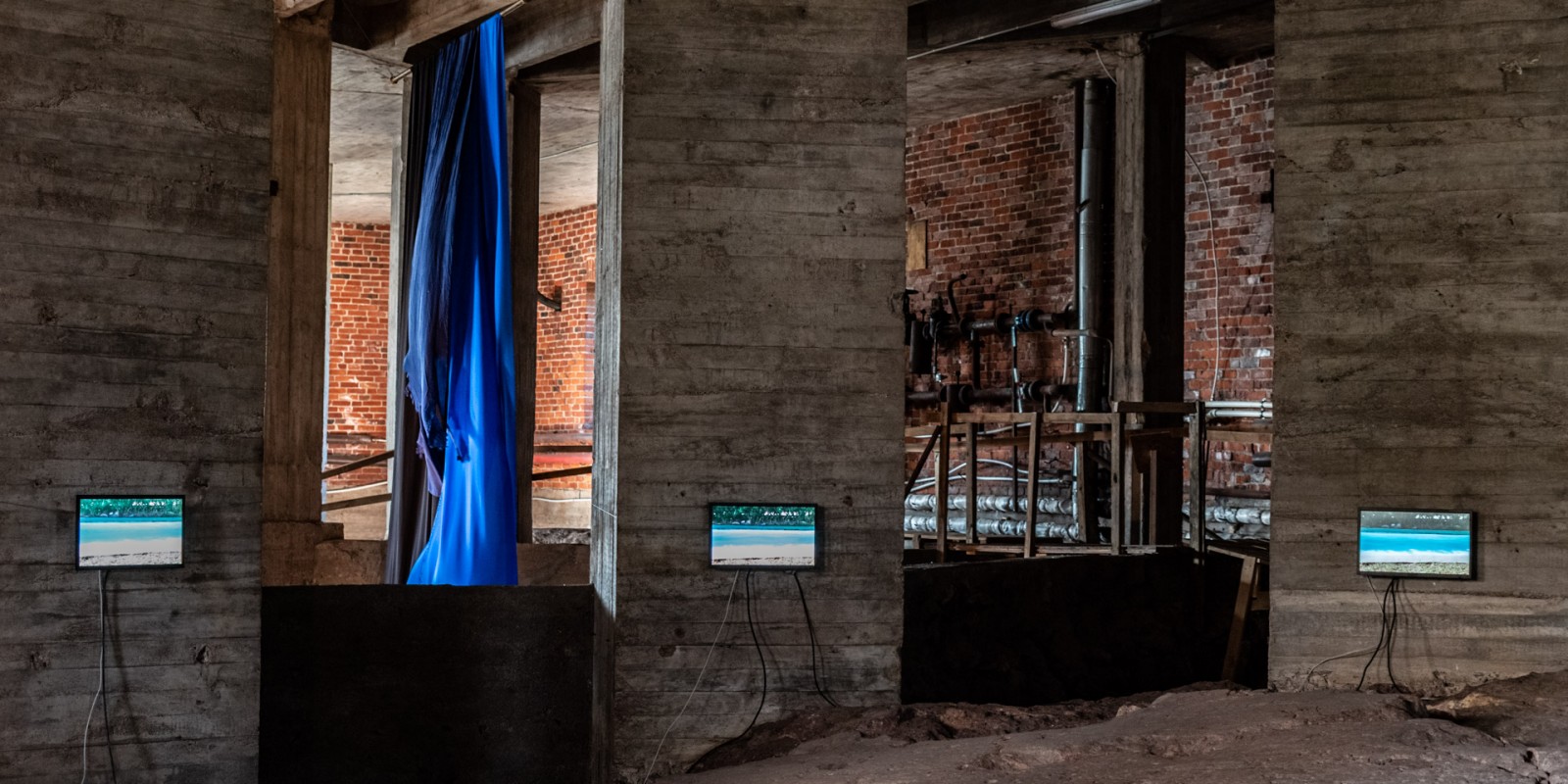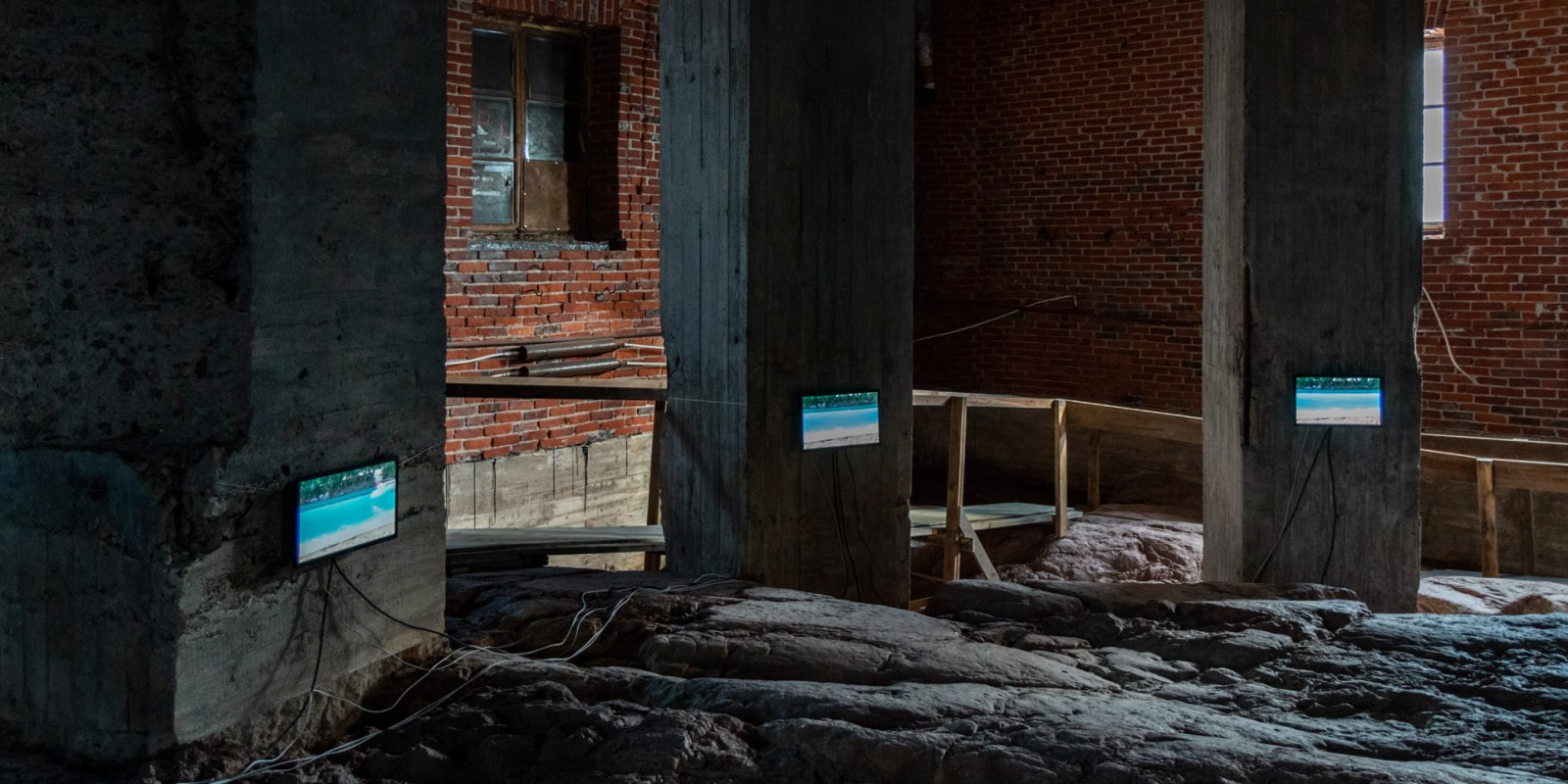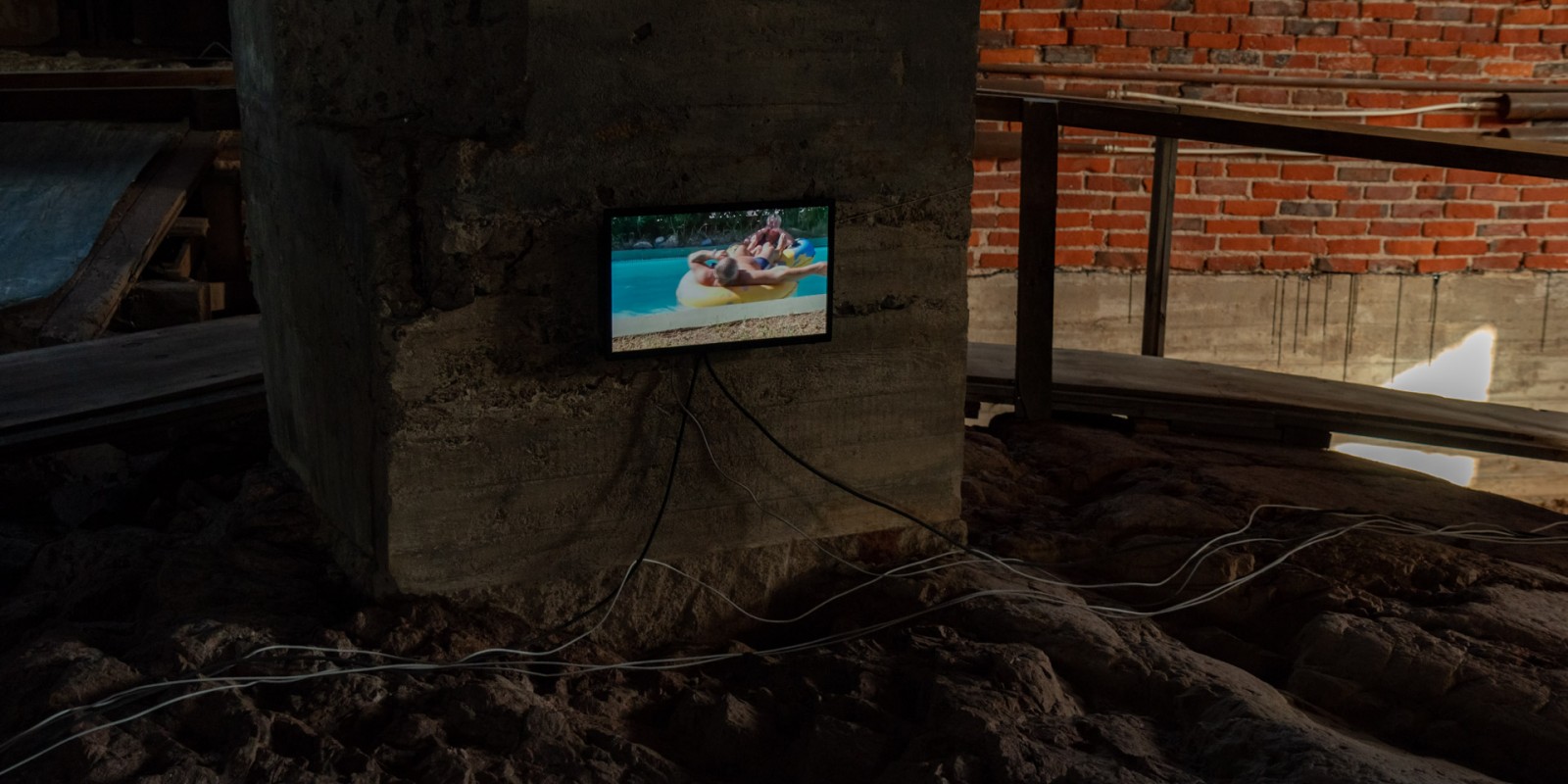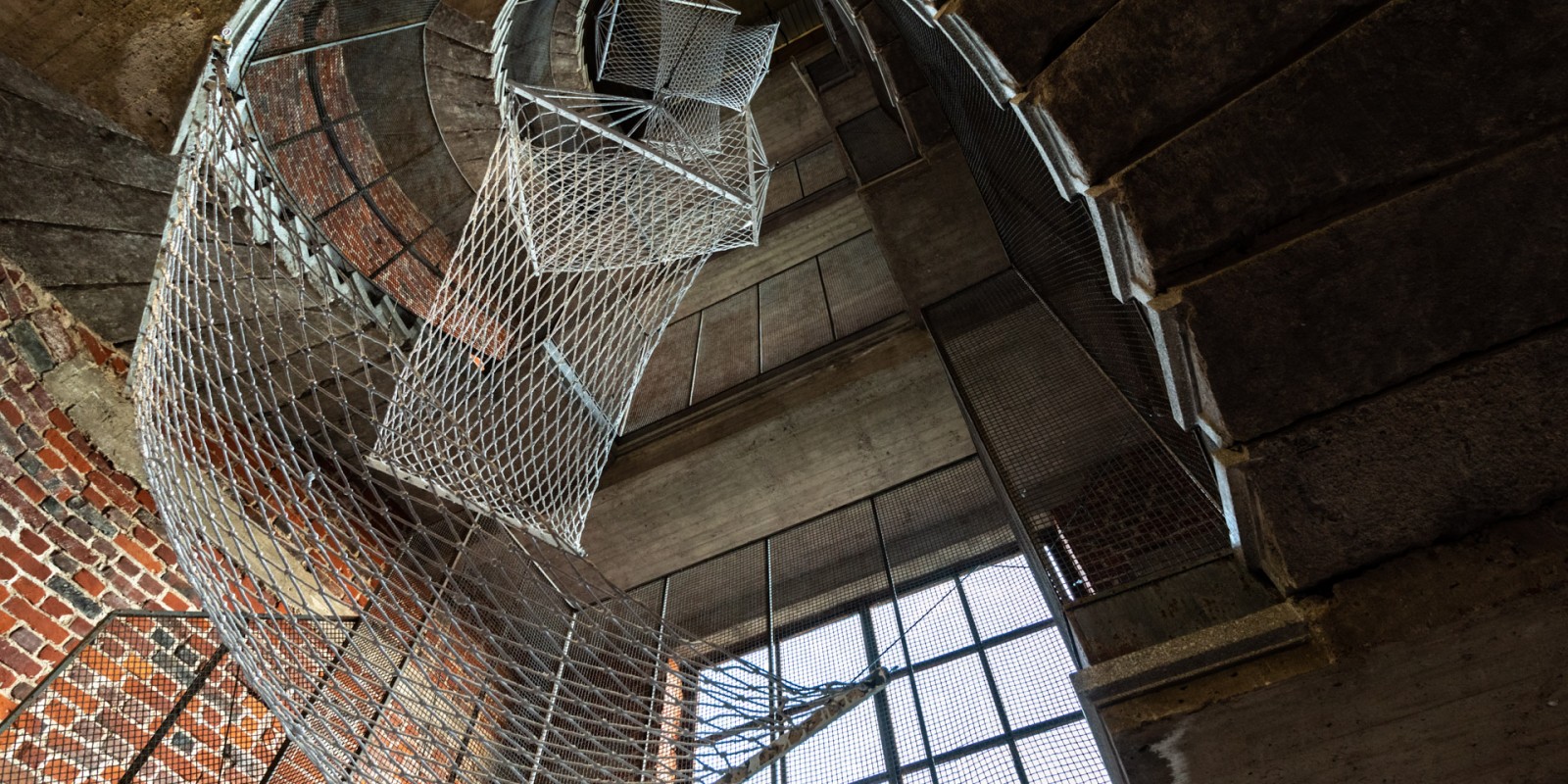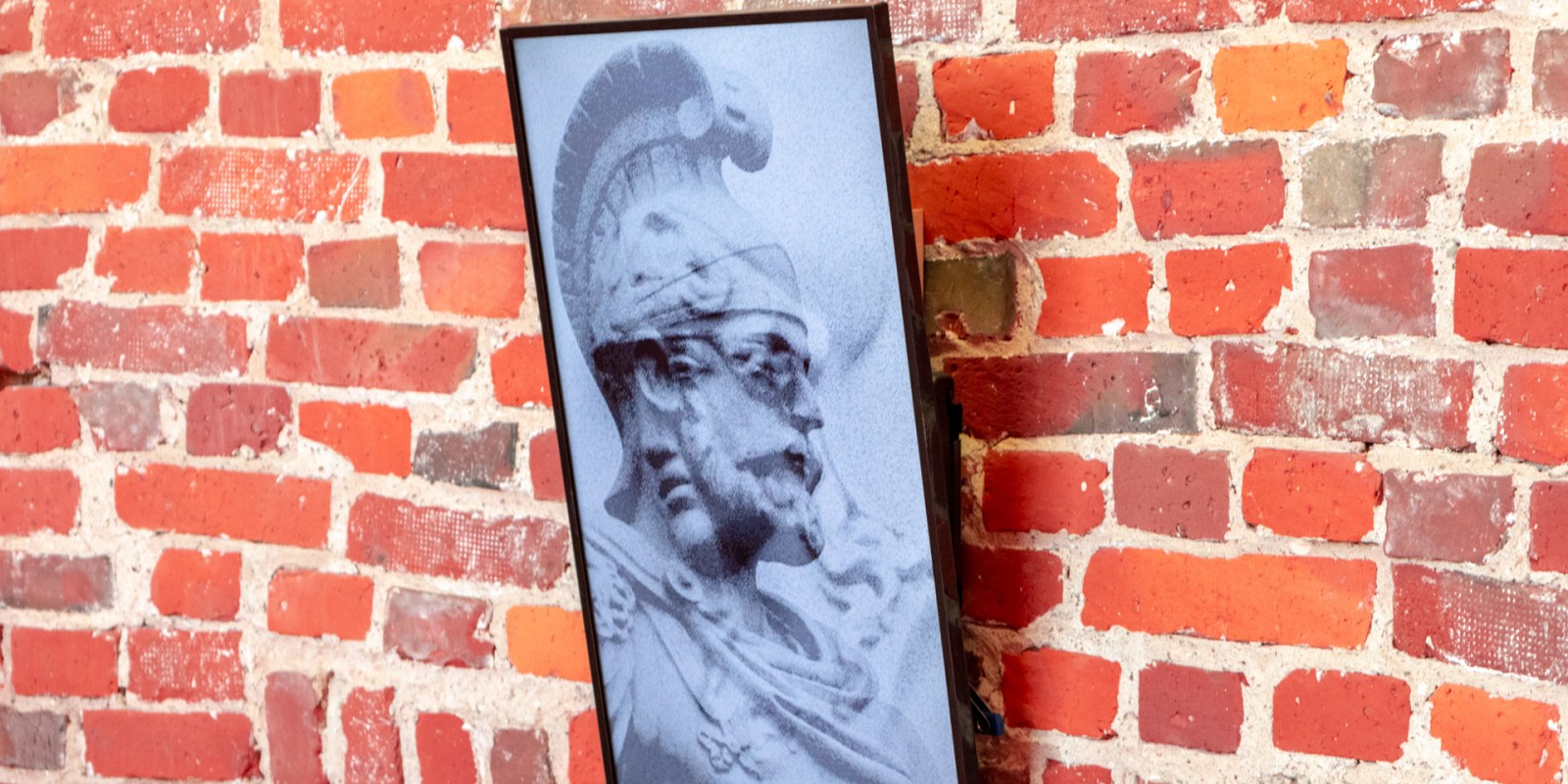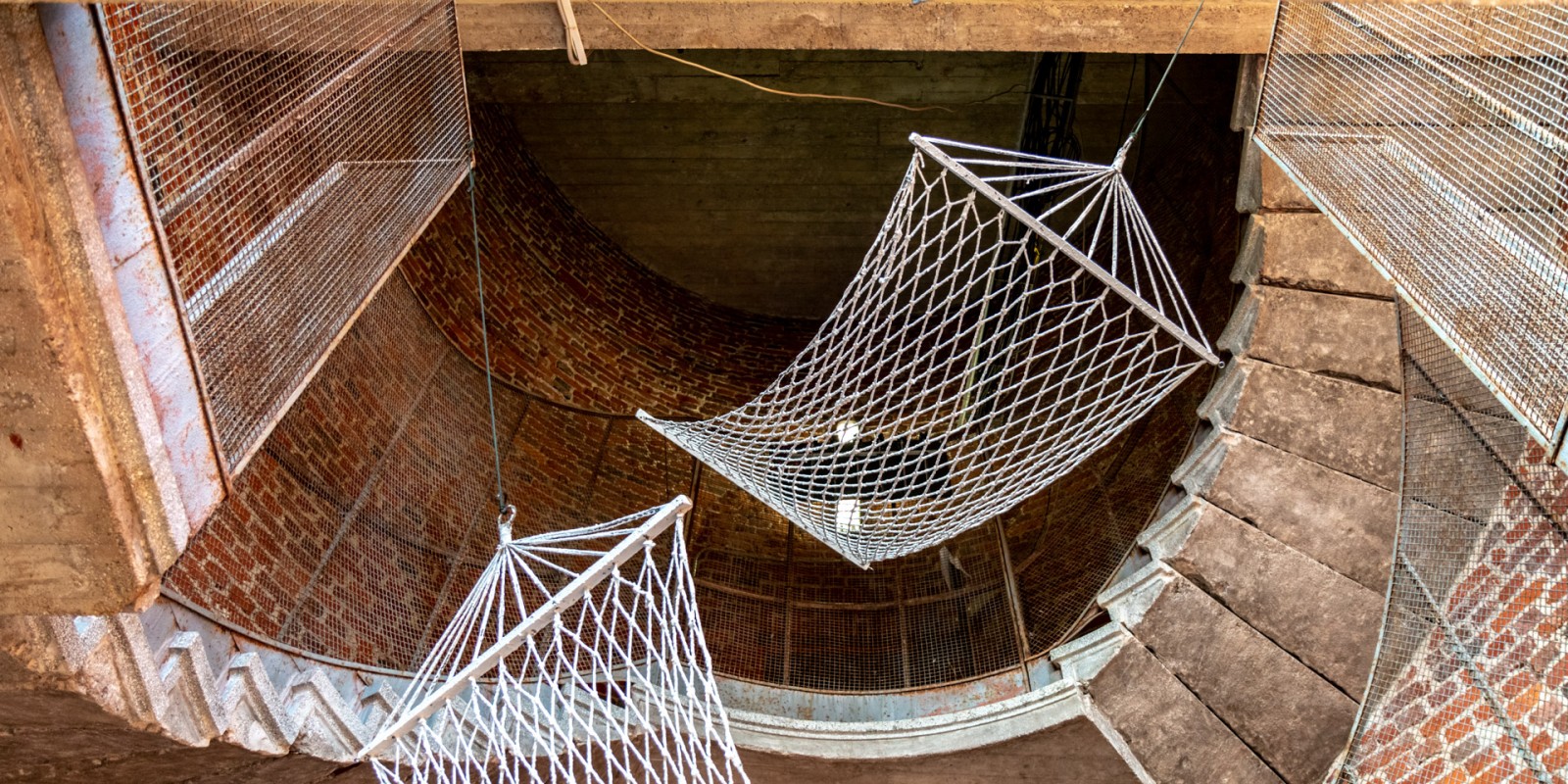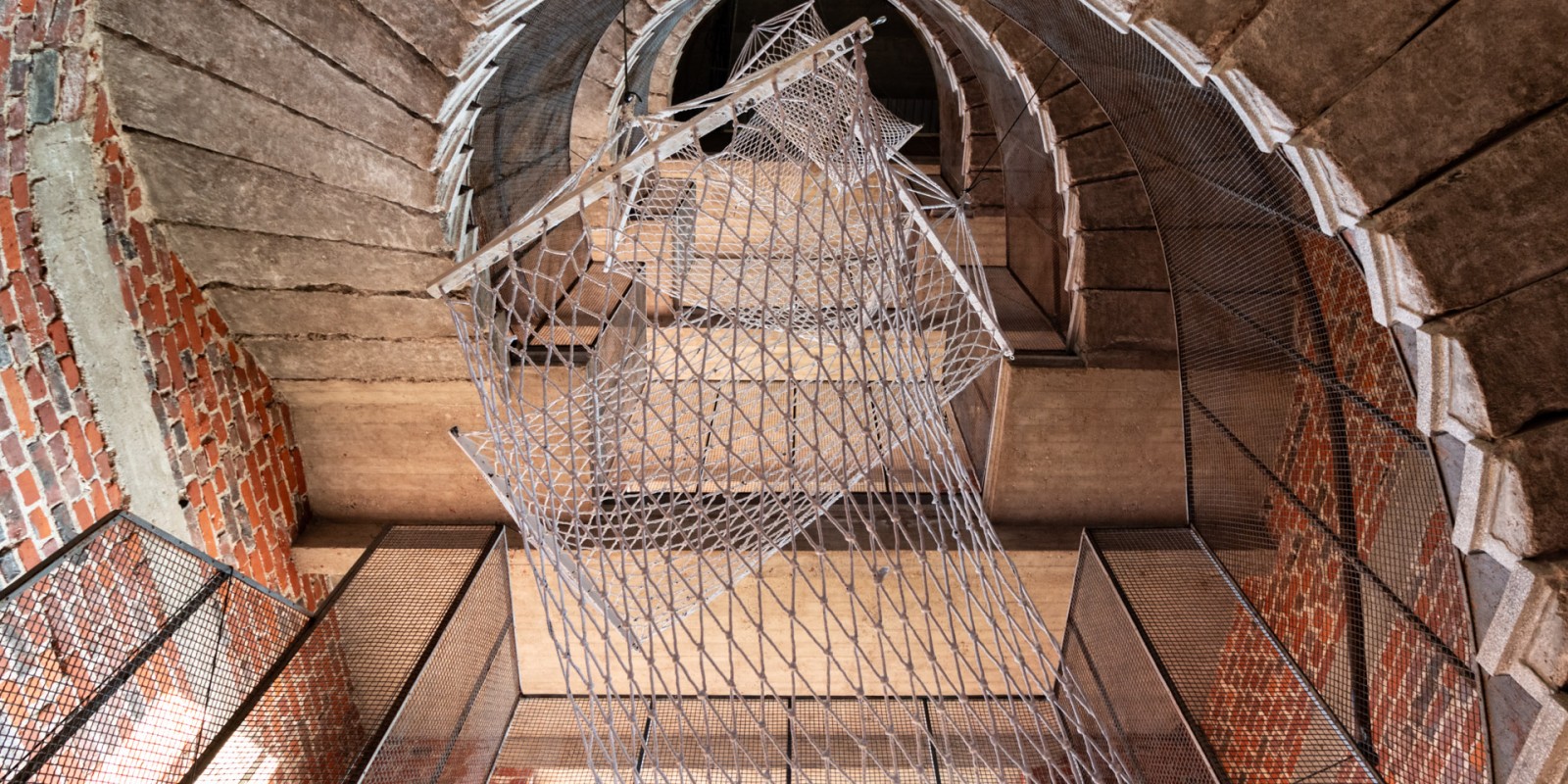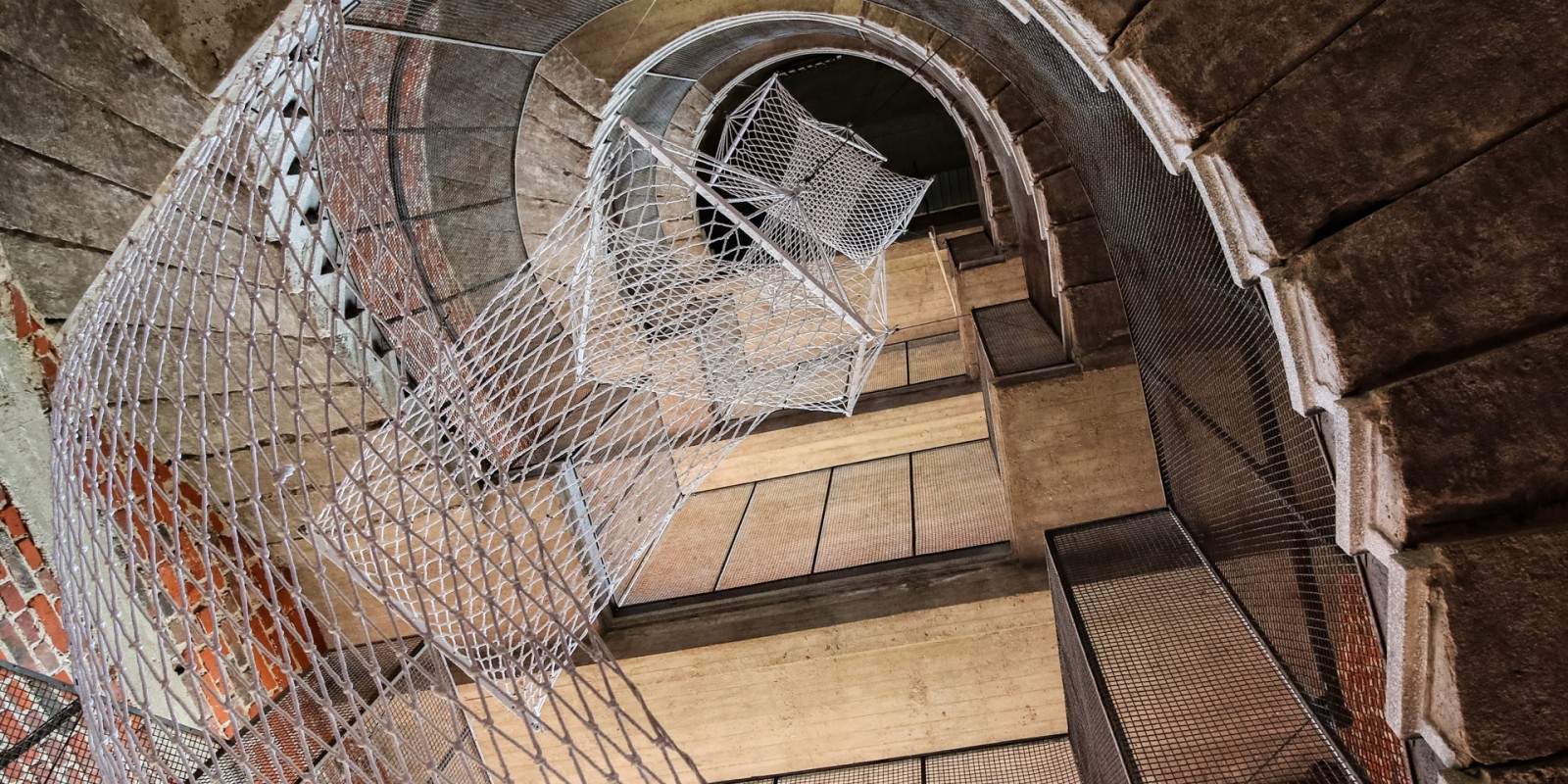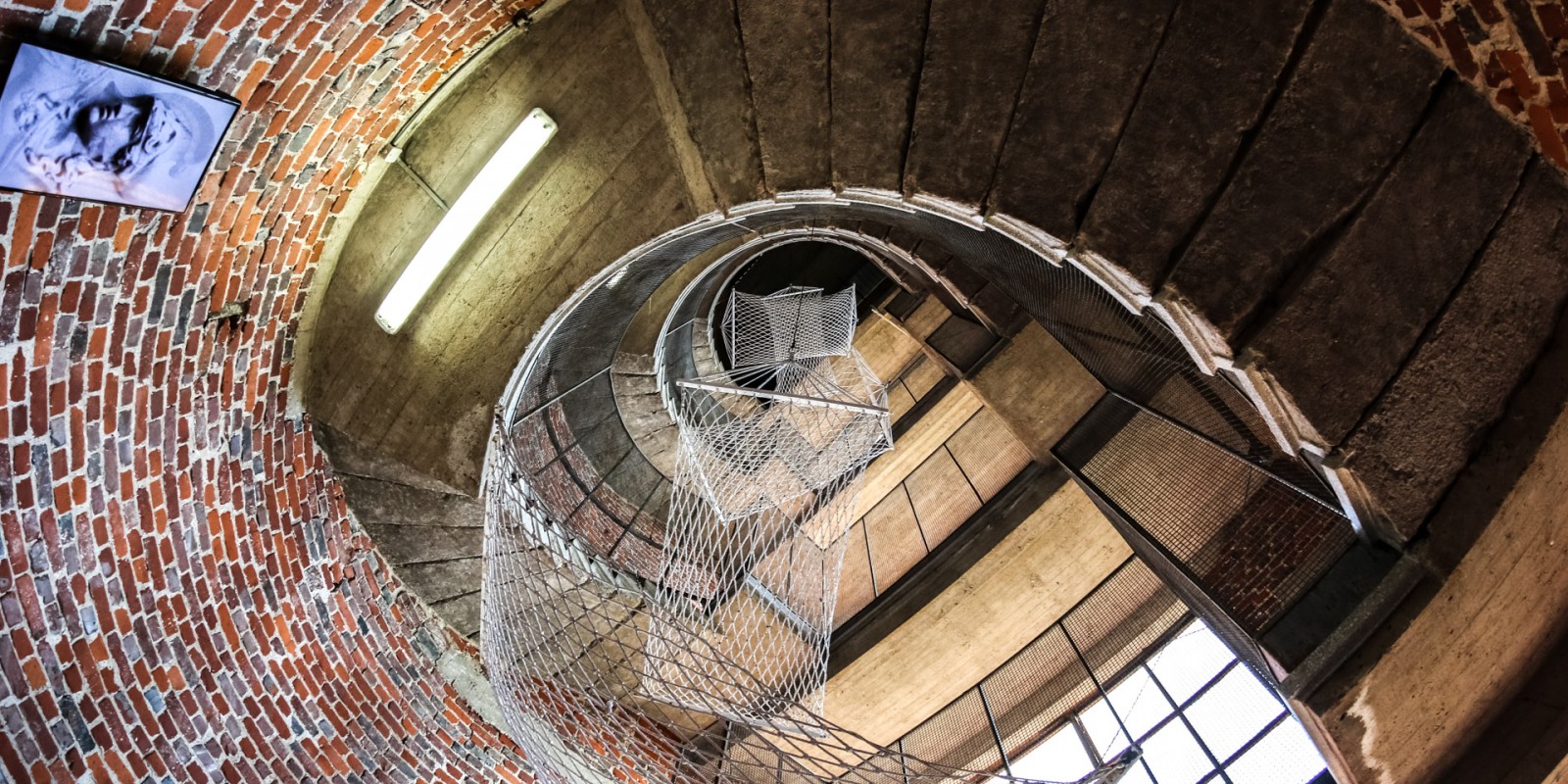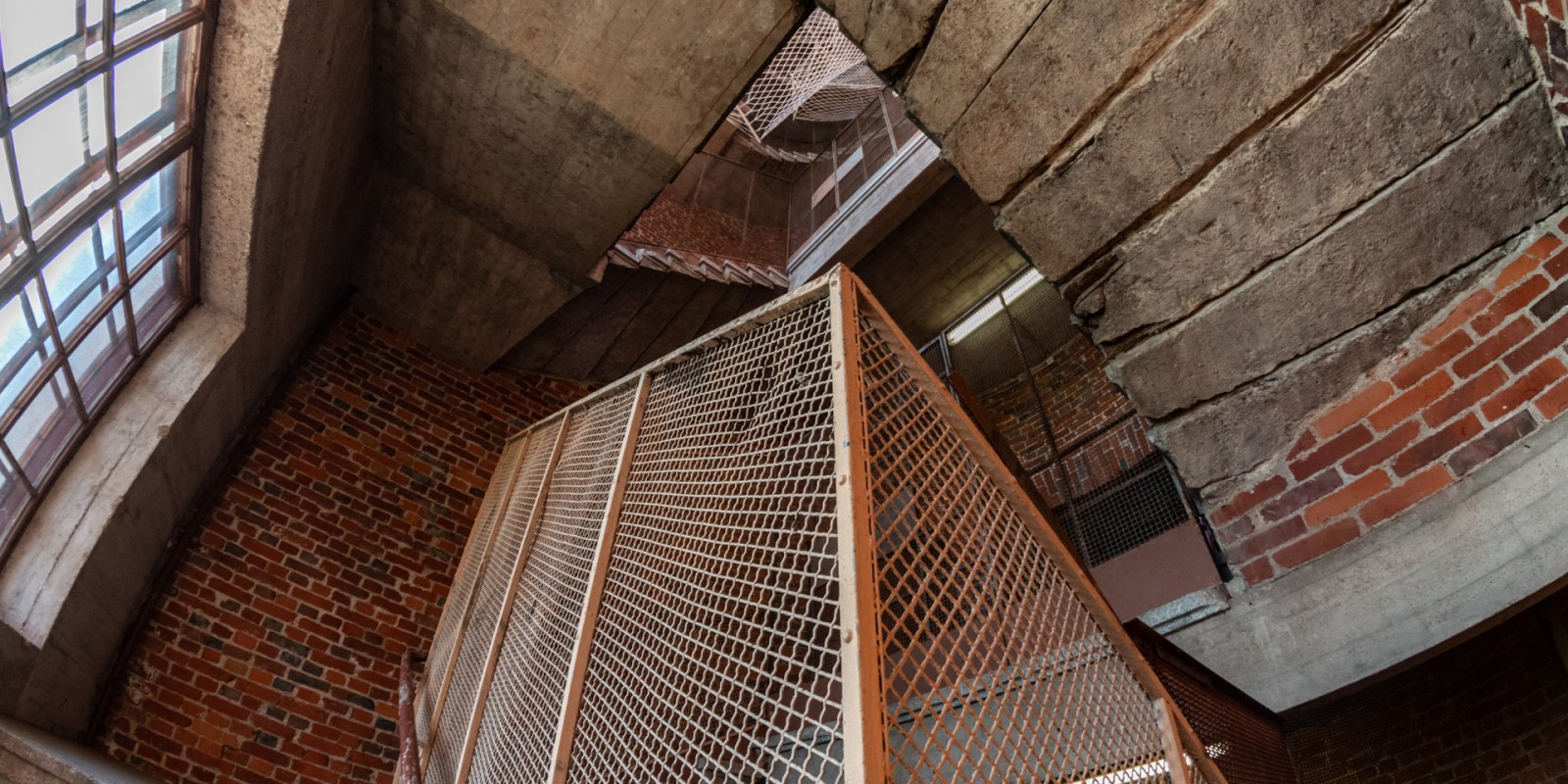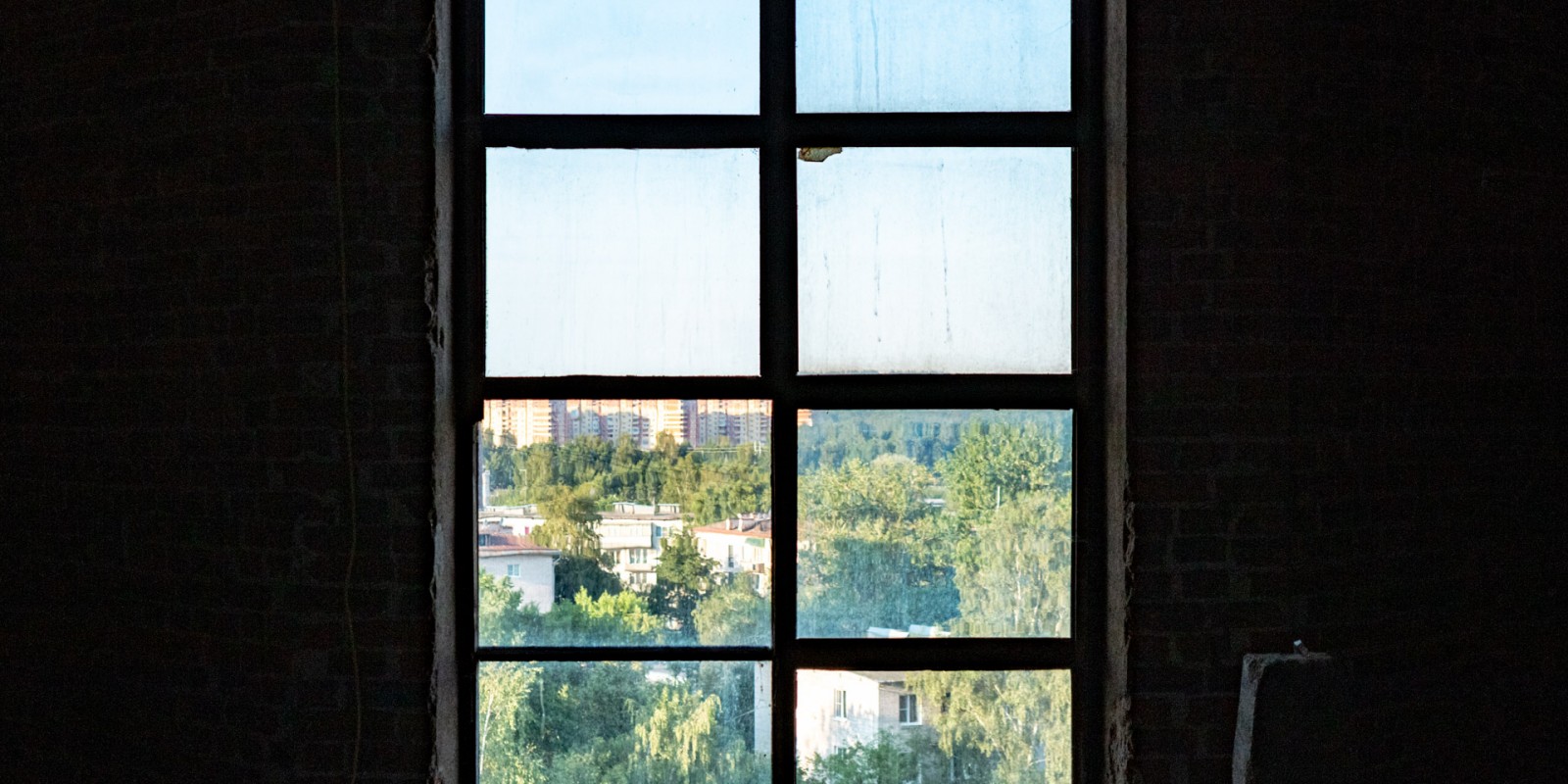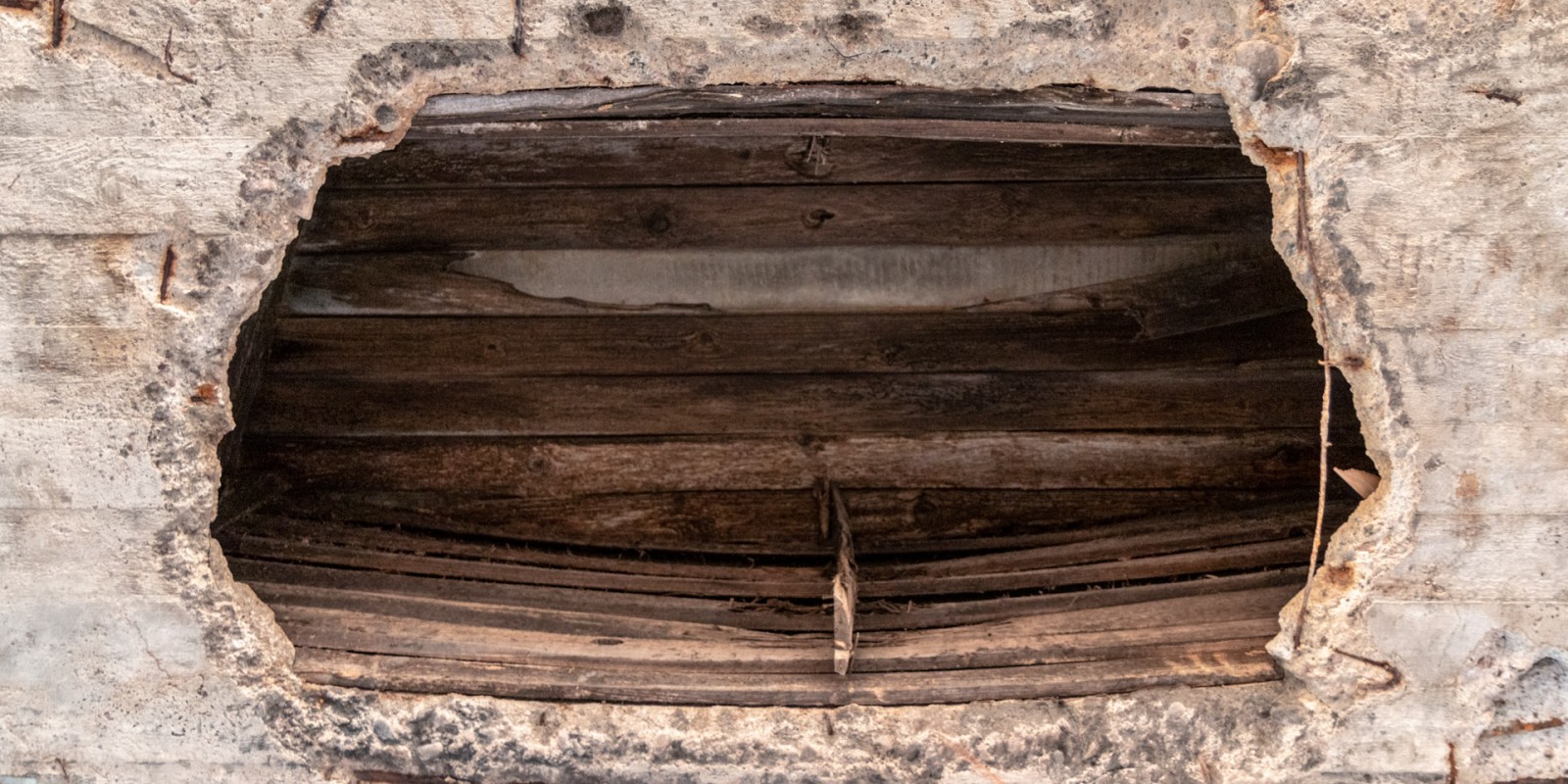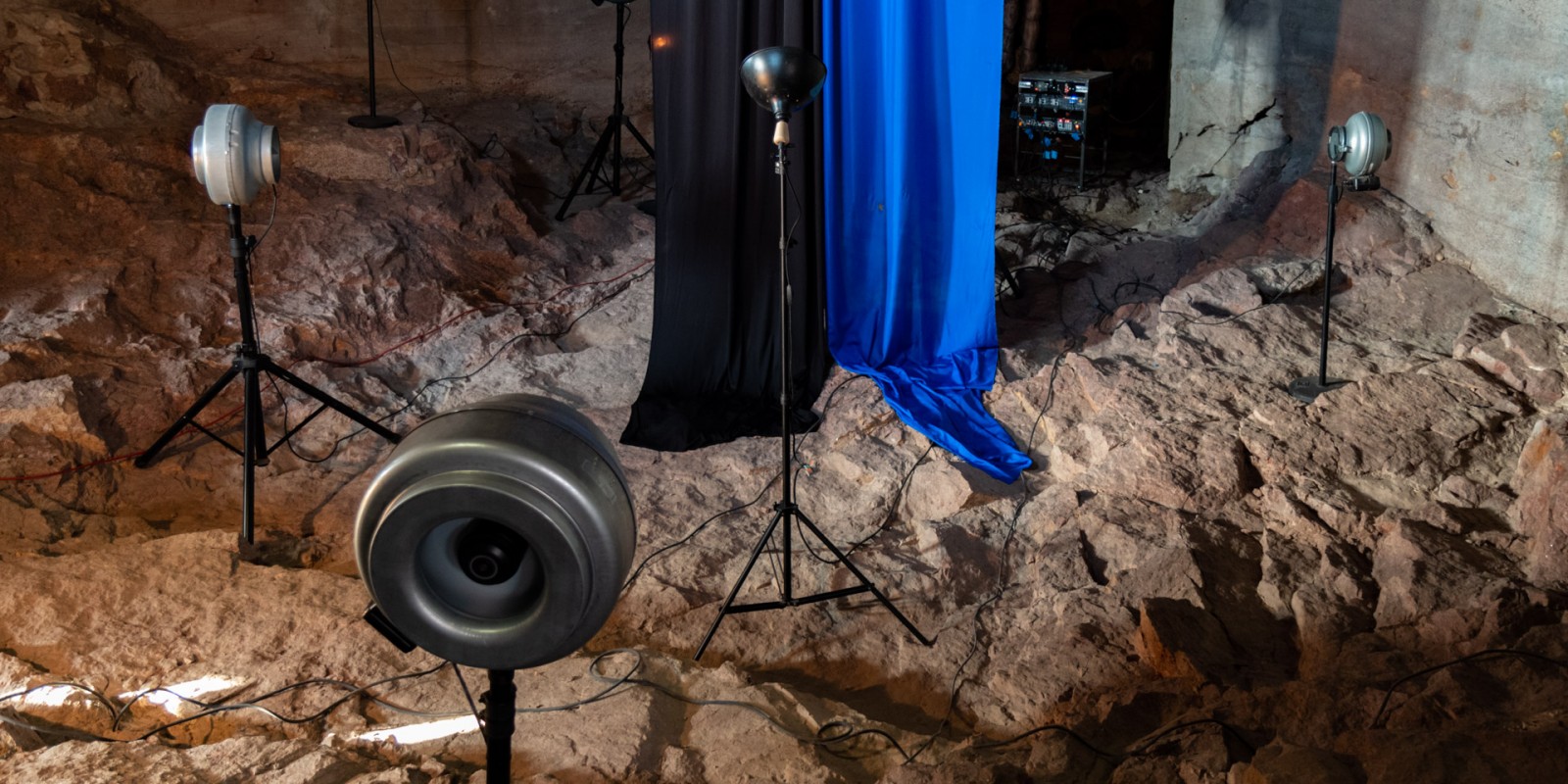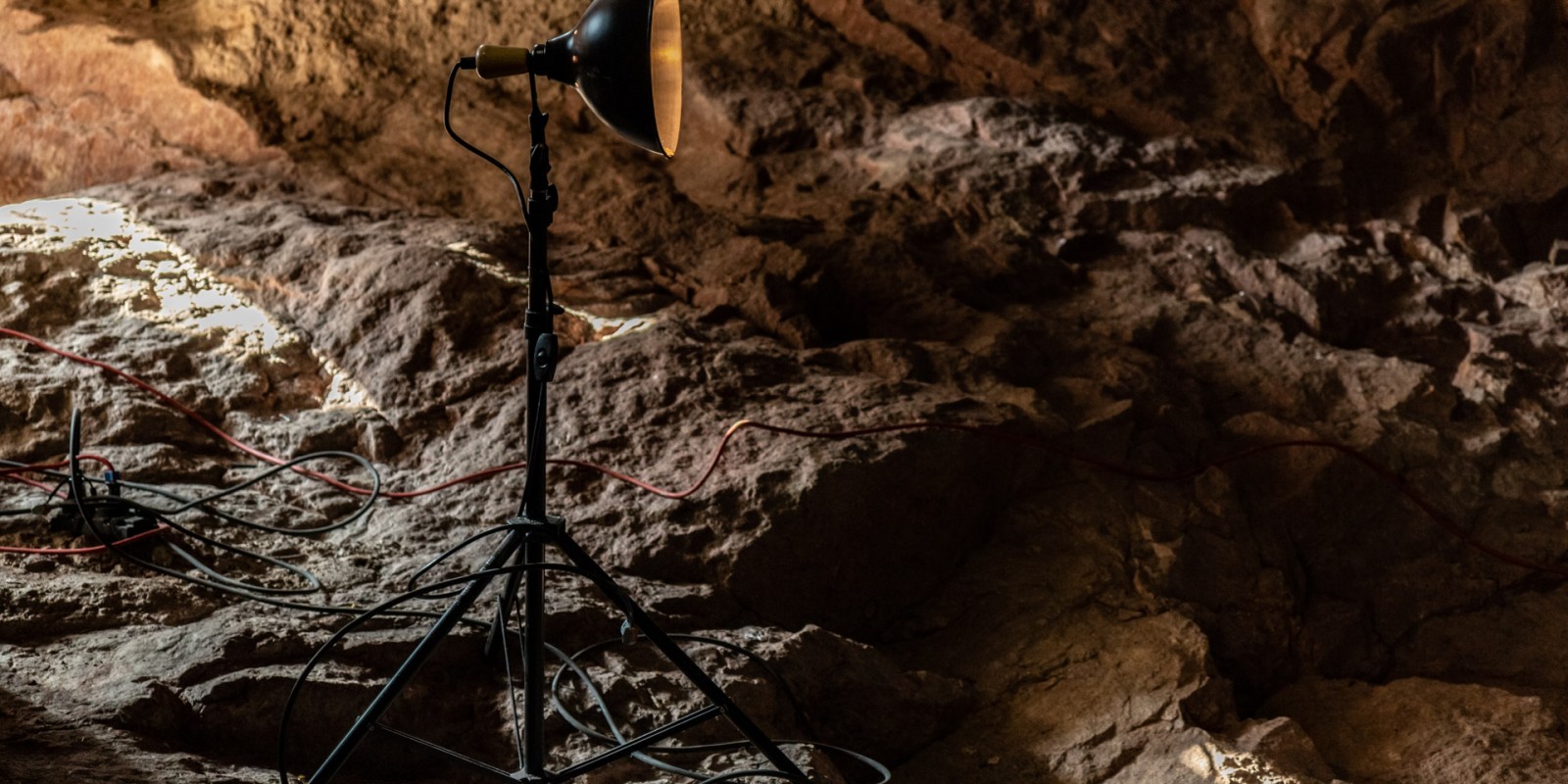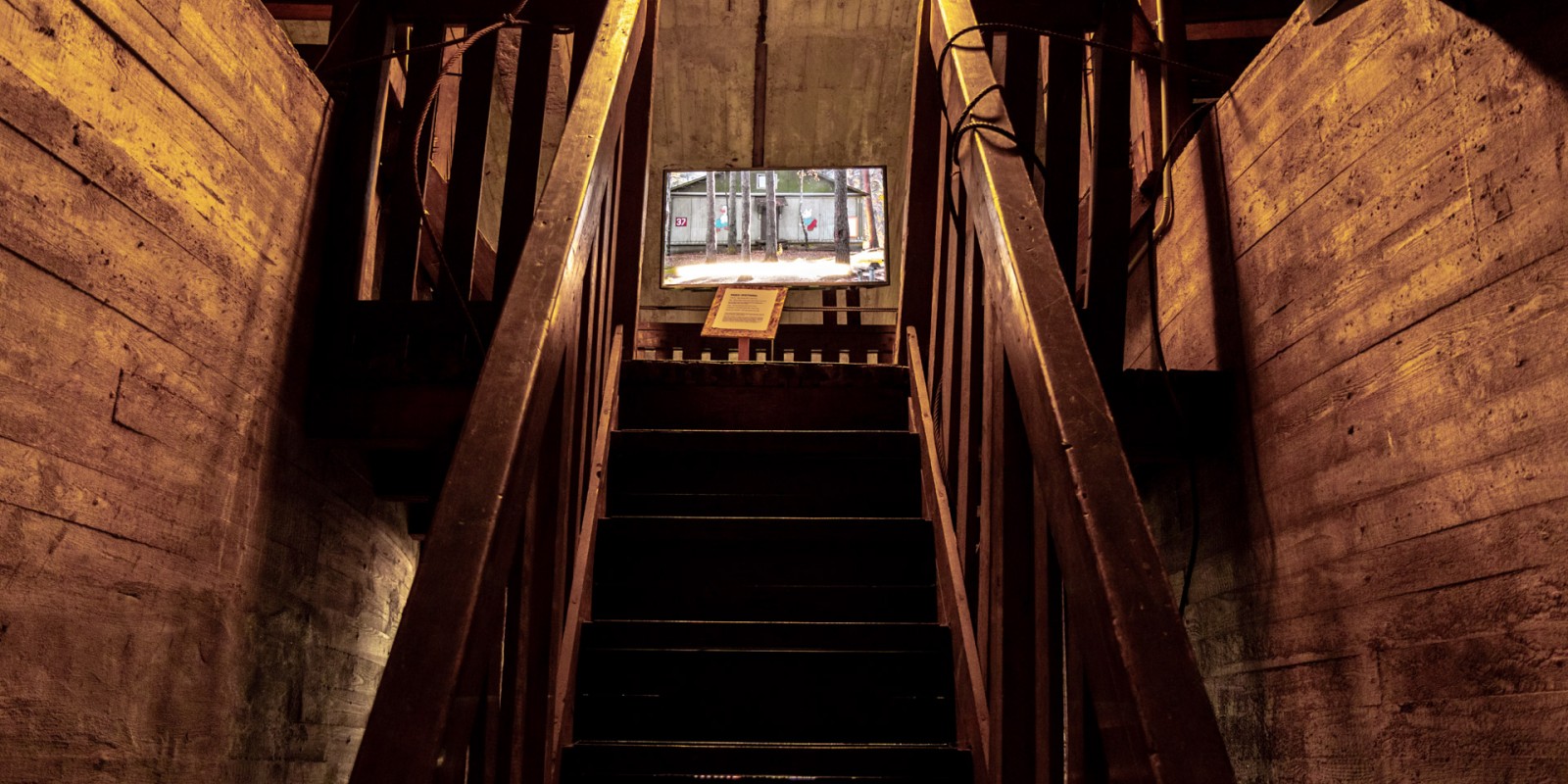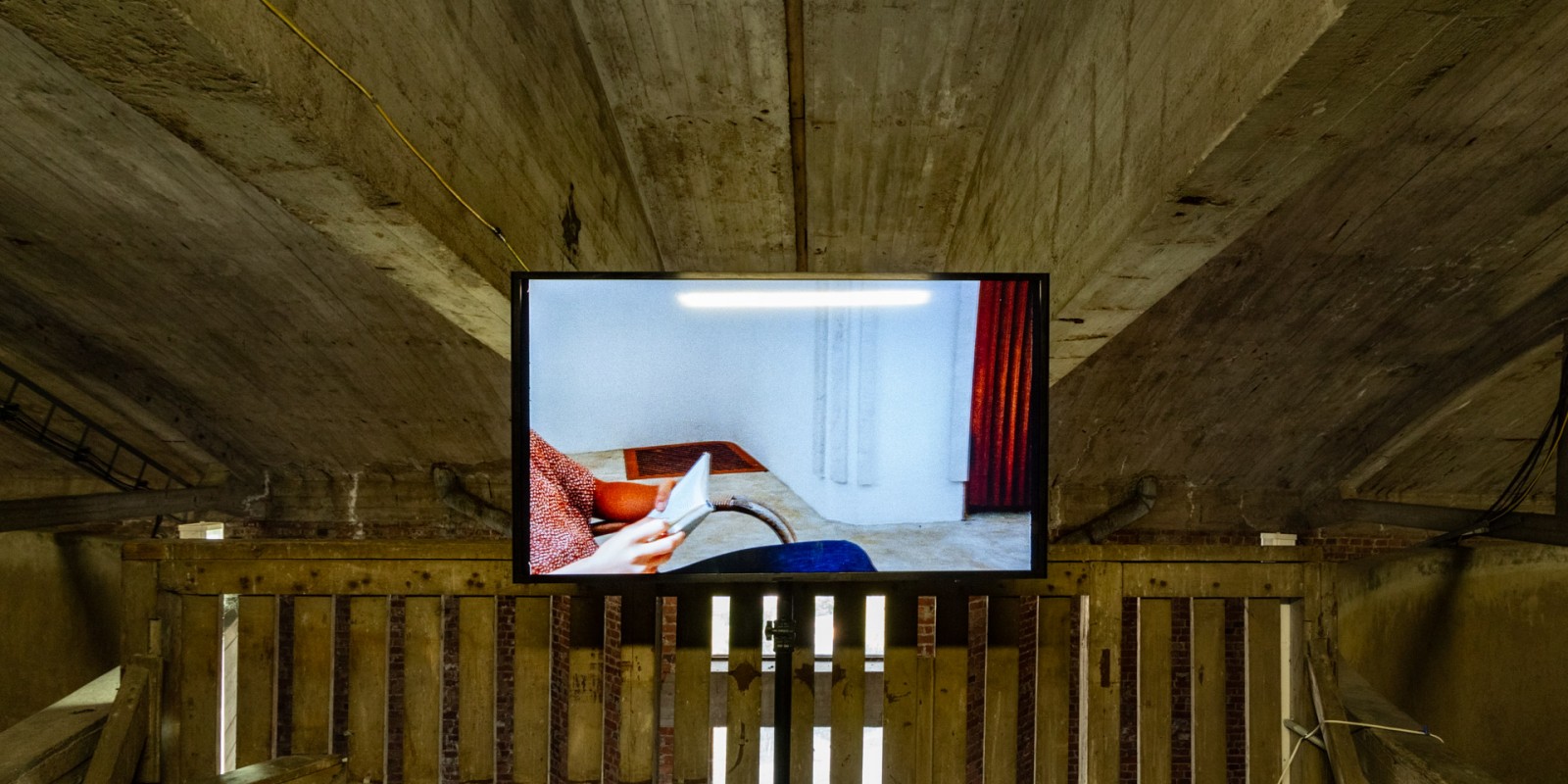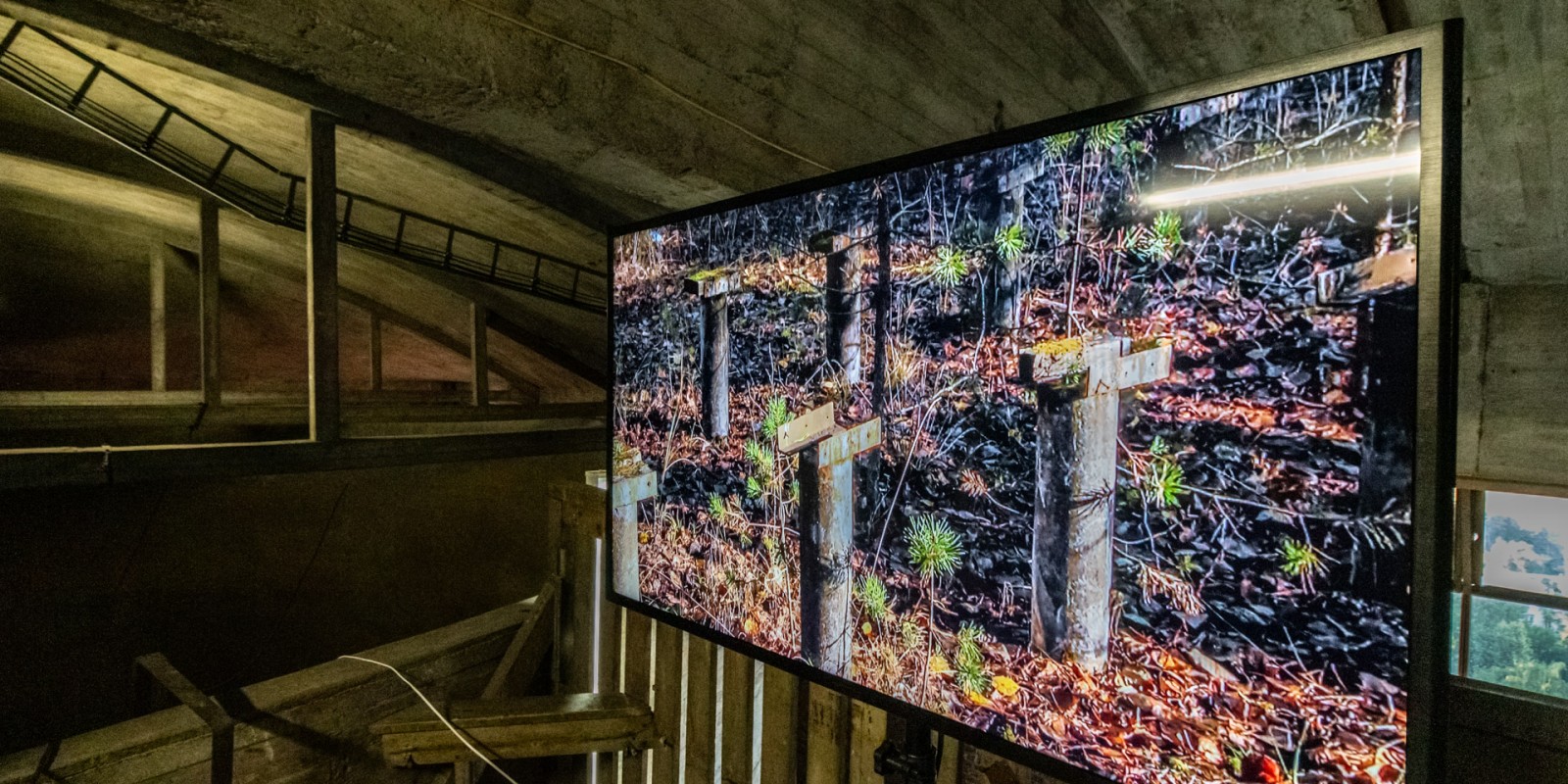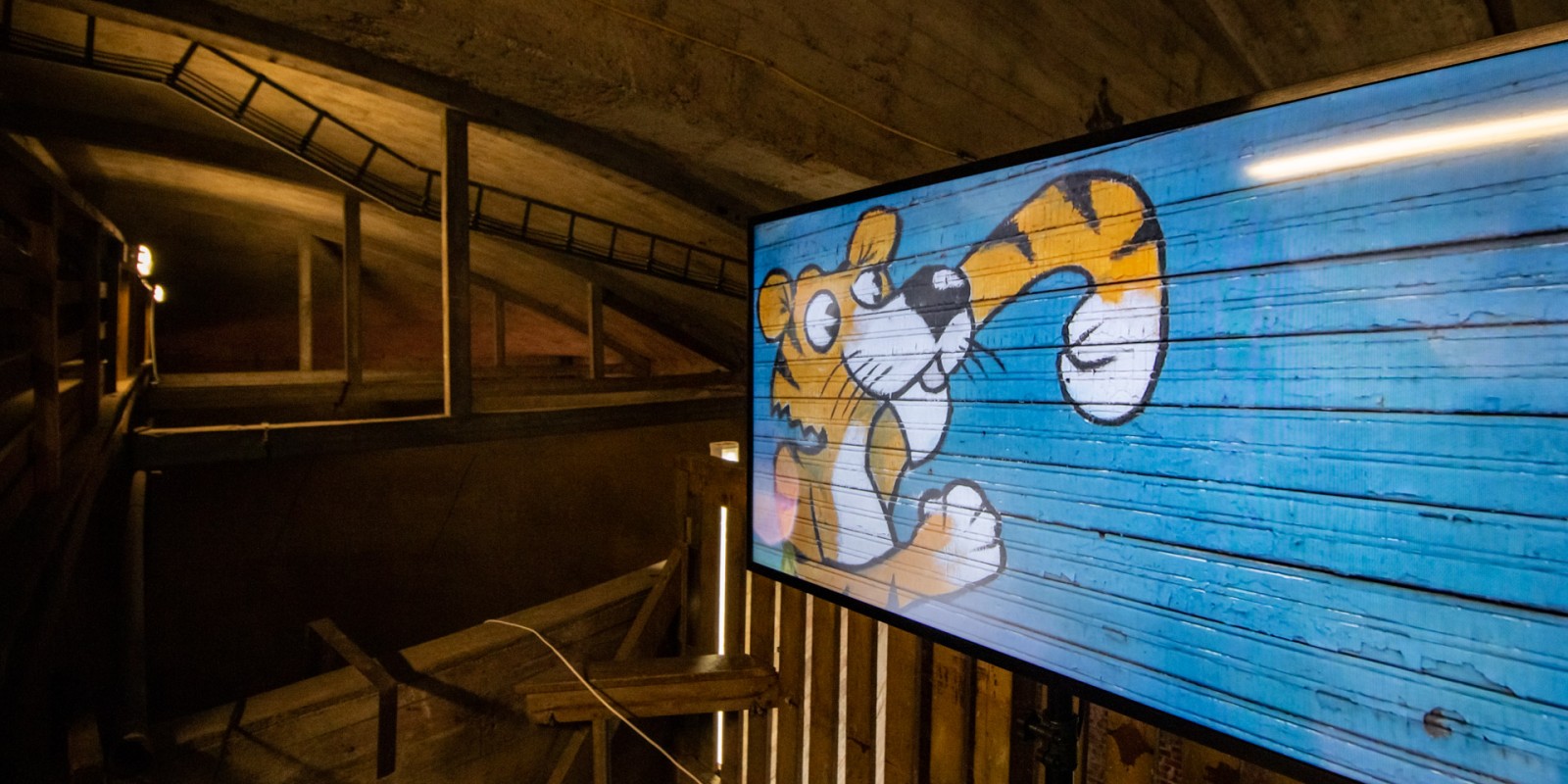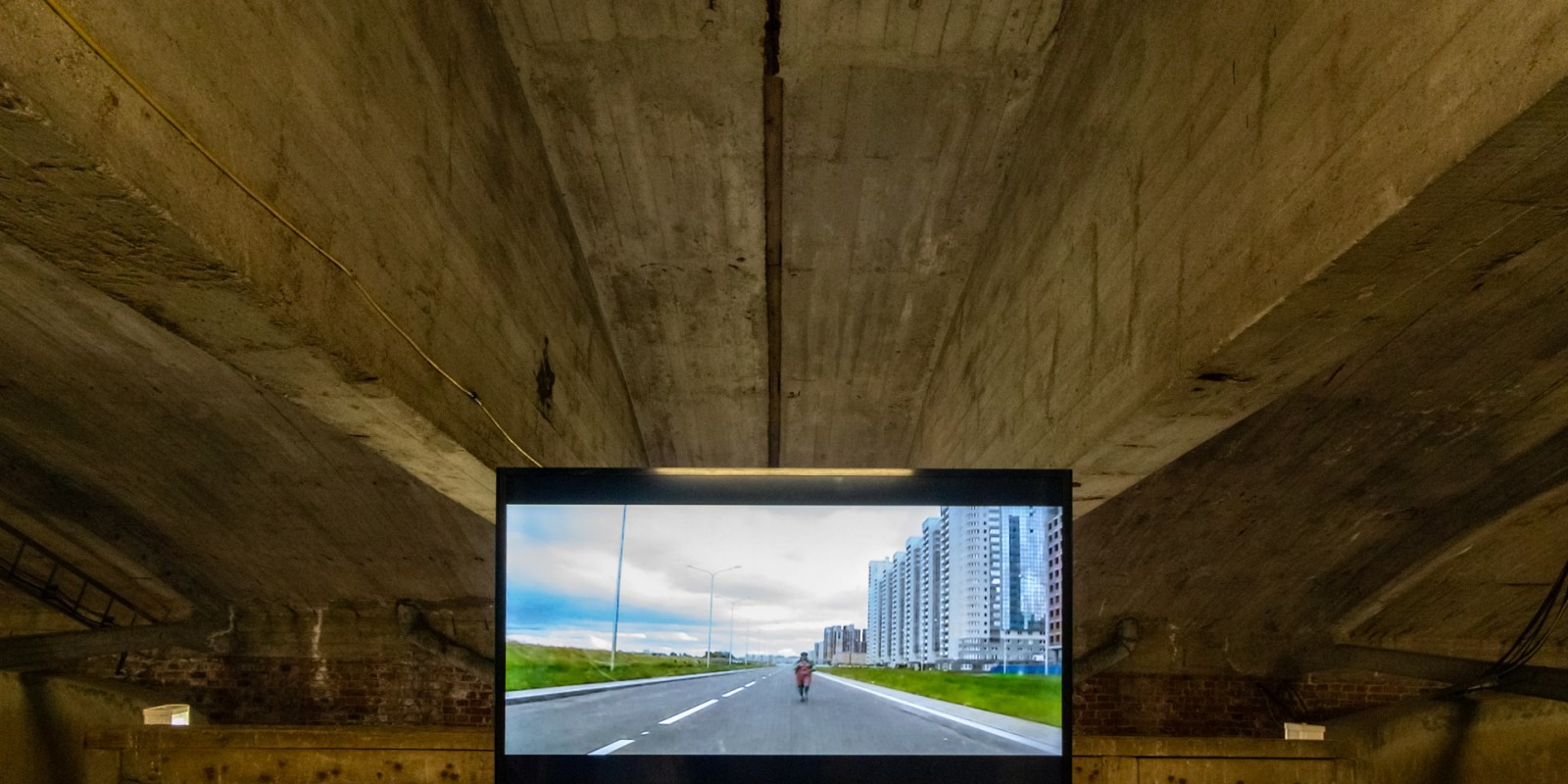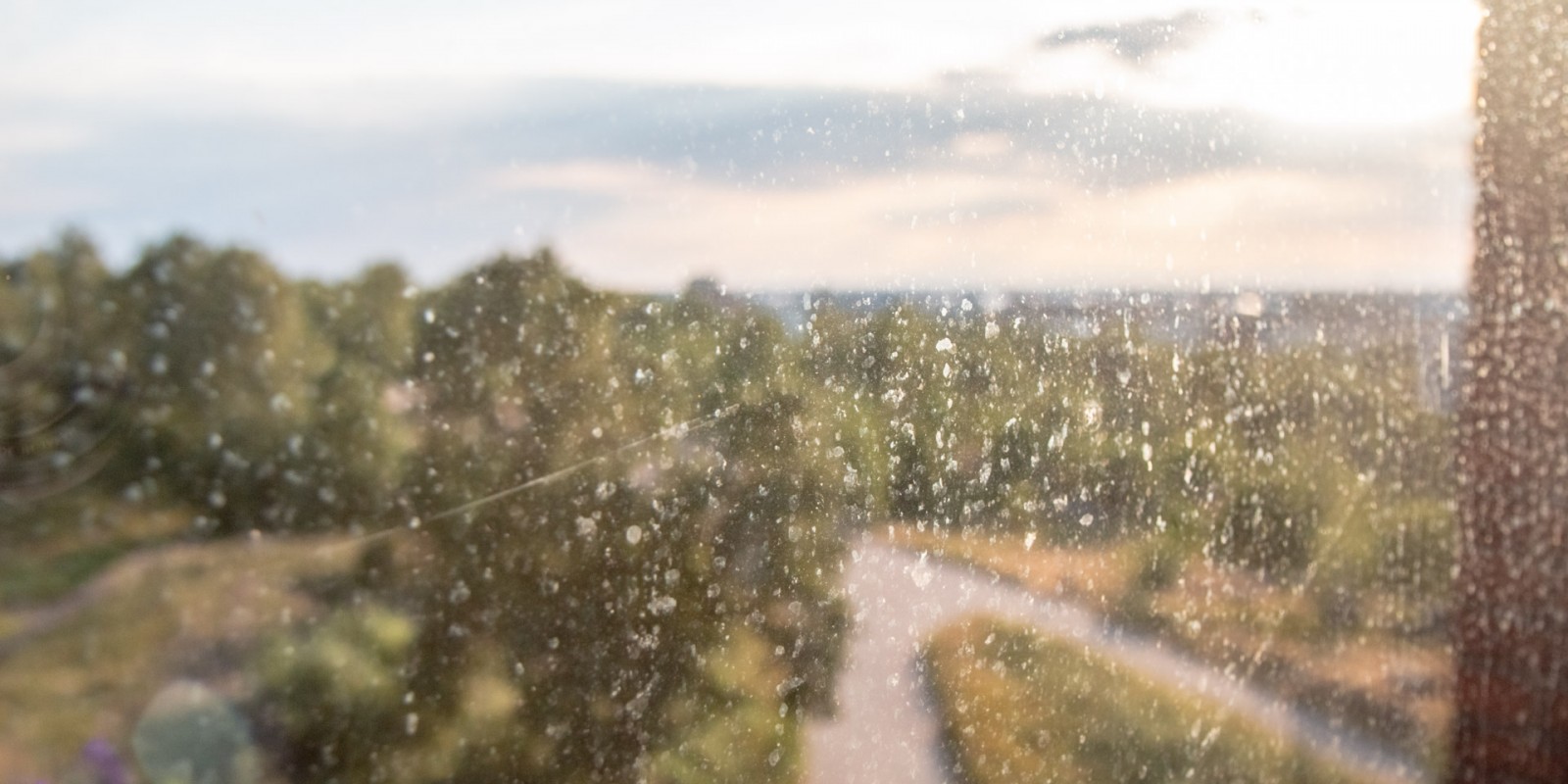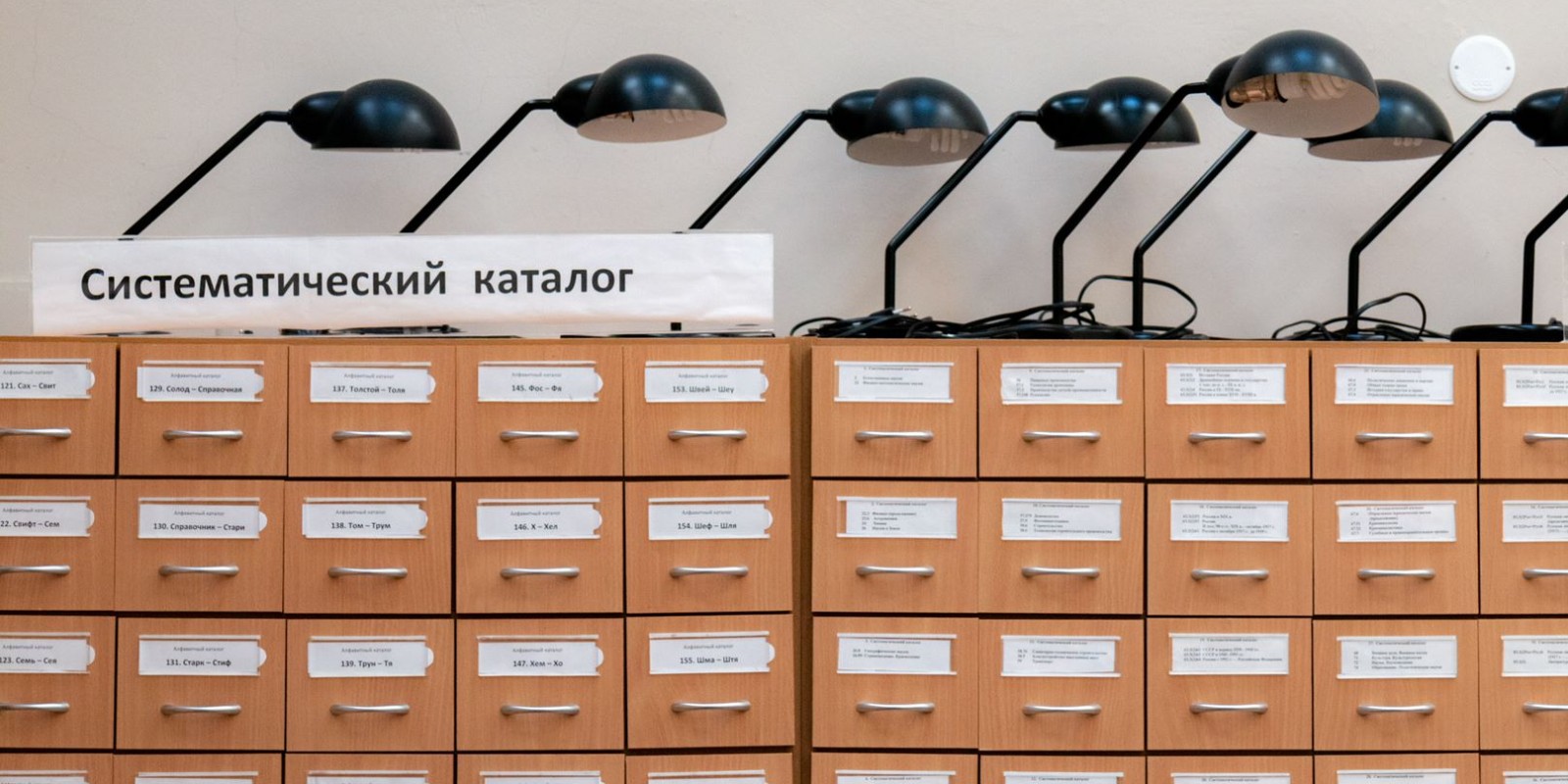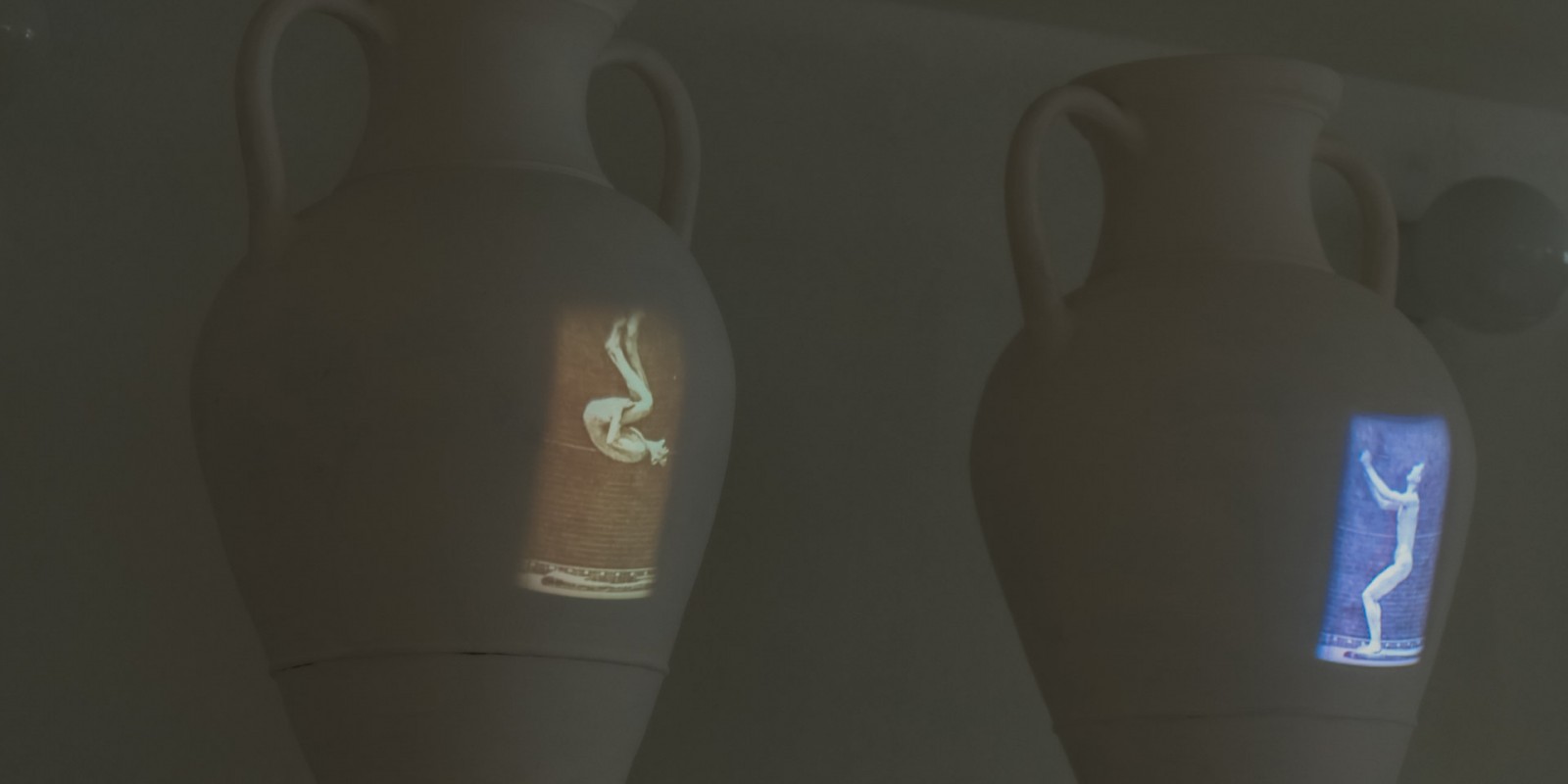CYLAND MediaArtLab will take part in the Chronotop Contemporary Art Festival in Vyborg this summer.
The aim of the project is to emphasize the complexity and eclecticism of the urban space of Vyborg, and to put new meanings and artistic interpretations on its cultural map. The festival venues will be the Alvar Aalto city library, the water tower on Batareinaya Hill and the Mon Repos Park. The festival is held with the technical and curatorial support of our media laboratory: at Chronotop, CYLAND will present a series of installations and video art works (curated by Anna Frants, Varvara Egorova), and hold two video screenings (curated by Victoria Ilyushkina, Dasha Dafis, Ilkka Pitkänen).
Images: Anton Khlabov / CYLAND
WATER TOWER ON BATAREINAYA HILL
2 Batareiny Passage
Installations, objects, video, experimental sound
Curators: Varvara Egorova, Anna Frants, Elena Gubanova
Participants: Anna Frants, Elena Gubanova, Ivan Govorkov, Alexey Grachev, Andrey Strokov, Alexander Bochkov.
In their new site-specific multi-channel sound installation “The Multitude”, Alexei Grachev, Andrei Strokov and Alexander Bochkov study acoustic properties of a space. By placing various sources of sound under concrete semi-spheres, the artists study the parameters of the sound’s distribution and focusing. The performance uses polymer batteries, portable speakers, control units with low power consumption, 3D-print and generative projection, which reacts sensitively to the acoustic features of the building, reducing the human footprint in the minimalist-functional space of the 2nd floor of a water tower.
Usually, Time is regarded as a line (theoretically, a line of endless length), on which the present moment is a point in constant motion. But this line may also be regarded as a succession of points in different positions, so that any moving or changing object may be interpreted as a number of motionless versions of “shots” of oneself. The artists observe the serene flow of life, but at the same time disrupt the “arrow of time”. Life consists of repetitions which seem to combine to form a single “river”. The video of people floating serenely along the river from one screen to another actually shows the same moment, which is multiplied and repeated, devoid of past and future, and joined into a cycle.
Elena Gubanova
Born in 1960 in Ulyanovsk, USSR. Artist, curator. Graduated from the Ilya Repin State Academic Institute of Painting, Sculpture and Architecture (Leningrad, USSR). Works in the fields of painting, sculpture, installations and video. Recipient of the Sergey Kuryokhin Award (2012, Russia) for “Best Work of Visual Art” (together with Ivan Govorkov). Her works have been exhibited at major Russian and foreign venues, including the Hermitage Museum, the Russian Museum, Museum of Moscow, University Ca’ Foscari (Venice, Italy), Chelsea Art Museum (New York, USA) and Kunstquartier Bethanien (Berlin, Germany). Participant of the Manifesta 10 parallel program (2014, St. Petersburg, Russia) and several exhibitions parallel to Venice Biennale (since 2011); frequent participant of Cyberfest. Since 1990, she has worked in collaboration with Ivan Govorkov. Lives and works in St. Petersburg, Russia.
Ivan Govorkov
Born in 1949 in Leningrad, USSR. Artist. Graduated from the Ilya Repin State Academic Institute of Painting, Sculpture and Architecture (Leningrad, USSR). He is engaged in philosophy, psychology, painting, drawing, sculpture and installations; he works at the junction of traditional art and cutting-edge technologies. Professor of drawing at the Ilya Repin Institute (St. Petersburg, Russia). Recipient of the Sergey Kuryokhin Award (2012, Russia) for “Best Work of Visual Art” (together with Elena Gubanova). His works have been exhibited at major Russian and foreign venues, including the Hermitage Museum, the Russian Museum, Museum of Moscow, University Ca’ Foscari (Venice, Italy), Chelsea Art Museum (New York, USA), Kunstquartier Bethanien (Berlin, Germany), and Sky Gallery 2 (Tokyo, Japan). Participant of the Manifesta 10 parallel program (2014, St. Petersburg, Russia) and several exhibitions parallel to the Venice Biennale (since 2011); frequent participant of Cyberfest. Since 1990, he worked in collaboration with Elena Gubanova. Lives and works in St. Petersburg, Russia.
“Seventh Heaven”, an expression signifying the highest degree of joy, happiness, and bliss, derives from the Greek philosopher Aristotle (384-322 BC), who described the arrangement of the celestial spheres in his work “On the Heavens”. The installation examines the urge to break free from the heaviness of existence, from boundaries and illusions, from fears and time, and from the earth’s gravity.
Elena Gubanova
Born in 1960 in Ulyanovsk, USSR. Artist, curator. Graduated from the Ilya Repin State Academic Institute of Painting, Sculpture and Architecture (Leningrad, USSR). Works in the fields of painting, sculpture, installations and video. Recipient of the Sergey Kuryokhin Award (2012, Russia) for “Best Work of Visual Art” (together with Ivan Govorkov). Her works have been exhibited at major Russian and foreign venues, including the Hermitage Museum, the Russian Museum, Museum of Moscow, University Ca’ Foscari (Venice, Italy), Chelsea Art Museum (New York, USA) and Kunstquartier Bethanien (Berlin, Germany). Participant of the Manifesta 10 parallel program (2014, St. Petersburg, Russia) and several exhibitions parallel to Venice Biennale (since 2011); frequent participant of Cyberfest. Since 1990, she has worked in collaboration with Ivan Govorkov. Lives and works in St. Petersburg, Russia.
Ivan Govorkov
Born in 1949 in Leningrad, USSR. Artist. Graduated from the Ilya Repin State Academic Institute of Painting, Sculpture and Architecture (Leningrad, USSR). He is engaged in philosophy, psychology, painting, drawing, sculpture and installations; he works at the junction of traditional art and cutting-edge technologies. Professor of drawing at the Ilya Repin Institute (St. Petersburg, Russia). Recipient of the Sergey Kuryokhin Award (2012, Russia) for “Best Work of Visual Art” (together with Elena Gubanova). His works have been exhibited at major Russian and foreign venues, including the Hermitage Museum, the Russian Museum, Museum of Moscow, University Ca’ Foscari (Venice, Italy), Chelsea Art Museum (New York, USA), Kunstquartier Bethanien (Berlin, Germany), and Sky Gallery 2 (Tokyo, Japan). Participant of the Manifesta 10 parallel program (2014, St. Petersburg, Russia) and several exhibitions parallel to the Venice Biennale (since 2011); frequent participant of Cyberfest. Since 1990, he worked in collaboration with Elena Gubanova. Lives and works in St. Petersburg, Russia.
An ironic statement by the authors about the main motivation of artistic work. Only this prospect attracts the modern artist, everything else is just the invention of a devious mind.
Elena Gubanova
Born in 1960 in Ulyanovsk, USSR. Artist, curator. Graduated from the Ilya Repin State Academic Institute of Painting, Sculpture and Architecture (Leningrad, USSR). Works in the fields of painting, sculpture, installations and video. Recipient of the Sergey Kuryokhin Award (2012, Russia) for “Best Work of Visual Art” (together with Ivan Govorkov). Her works have been exhibited at major Russian and foreign venues, including the Hermitage Museum, the Russian Museum, Museum of Moscow, University Ca’ Foscari (Venice, Italy), Chelsea Art Museum (New York, USA) and Kunstquartier Bethanien (Berlin, Germany). Participant of the Manifesta 10 parallel program (2014, St. Petersburg, Russia) and several exhibitions parallel to Venice Biennale (since 2011); frequent participant of Cyberfest. Since 1990, she has worked in collaboration with Ivan Govorkov. Lives and works in St. Petersburg, Russia.
Ivan Govorkov
Born in 1949 in Leningrad, USSR. Artist. Graduated from the Ilya Repin State Academic Institute of Painting, Sculpture and Architecture (Leningrad, USSR). He is engaged in philosophy, psychology, painting, drawing, sculpture and installations; he works at the junction of traditional art and cutting-edge technologies. Professor of drawing at the Ilya Repin Institute (St. Petersburg, Russia). Recipient of the Sergey Kuryokhin Award (2012, Russia) for “Best Work of Visual Art” (together with Elena Gubanova). His works have been exhibited at major Russian and foreign venues, including the Hermitage Museum, the Russian Museum, Museum of Moscow, University Ca’ Foscari (Venice, Italy), Chelsea Art Museum (New York, USA), Kunstquartier Bethanien (Berlin, Germany), and Sky Gallery 2 (Tokyo, Japan). Participant of the Manifesta 10 parallel program (2014, St. Petersburg, Russia) and several exhibitions parallel to the Venice Biennale (since 2011); frequent participant of Cyberfest. Since 1990, he worked in collaboration with Elena Gubanova. Lives and works in St. Petersburg, Russia.
An allegory of anxious states – there is no love, no compassion – just anxiety. The project represents a carefully produced stage drama whose cast of characters is a casually thrown draping. Its “choreography” is achieved by work of the ventilators of various power levels and the theater lighting. The presented show is meant to evoke an uneasy feeling.
Anna Frants
Born in 1965 in Leningrad, USSR. Artist, curator in the field of media art. She graduated from the Vera Mukhina Higher School of Art and Design (Leningrad, USSR) and Pratt Institute (New York, USA). Cofounder of the nonprofit cultural foundation St. Petersburg Arts Project, CYLAND Media Art Lab and Cyberfest. Frants’ interactive installations have been showcased at Moscow Biennale of Contemporary Art (Russia), Video Guerrilha Festival (Brazil), Manifesta 10 Biennale (St. Petersburg, Russia, 2014), Museum of Art and Design (New York, USA), Hermitage Museum (St. Petersburg, Russia), Chelsea Art Museum (New York, USA), Russian Museum (St. Petersburg, Russia), Kunstquartier Bethanien (Berlin, Germany) and at other major venues all over the world. The artist’s works are held in the collections of the Russian Museum (St. Petersburg, Russia), Museum of Art and Design (New York, USA), Sergey Kuryokhin Center for Modern Art (St. Petersburg, Russia) and Kolodzei Art Foundation (New York, USA) as well as in numerous private collections. Lives and works in New York, USA, and St. Petersburg, Russia.
Video art
Curators: Victoria Ilyushkina, Dasha Dafis
Participants: Saara Ekström, Jenni Toikka, Alyona Tereshko, Viktoria Ilyushkina, Alexander Antipin, Alexander Borisov.
Time inevitably moves from past to future, passing the present moment. Mankind encloses to time its marks, stains and ruins. On the verge of vast changes time acts abnormally. It leaks, folds and fractures, allowing things belonging elsewhere, to the otherworldly, to permeate itself. In the 8mm film the Helsinki Olympic Stadium represents a historical paradigm shift. Completed in 1938 the building outlines pure functionalist architecture and stands as a landmark for optimistic utopia and the oblivion on man’s neglect of history.
Saara Ekström (Author), Saara Ekström (Cinematographer), Saara Ekström (Director), Eero Tammi (Editor), Saara Ekström (Script), Pietu Korhonen (Sound Design), Heikki Vienola (Actor), AVEK — The Promotion Centre for Audiovisual Culture (Funder), Alfred Kordelin Foundation (Funder).
Saara Ekström
Born 1965. She works in film, photography, text and installation. Chronotopes where time and place densify, time that nurtures and erodes, the ambivalent desire to both remember and forget are at the core of her art. Ekstr.m’s work has been shown extensively in various museums and festivals in Europe, the Americas and Asia. She received the Finnish media art prize AVEK-award in 2018 and the prizes of SW Finland in 2017, Finnish Art Society in 1995 and the Aboa prize in 1994. She has been the Helsinki Festival Artist in 2005 and was nominated for both Ars Fennica and Carnegie Art Award prizes in 2010.
We see the timeless figure of a reading woman by the pool side. The camera pans slowly past smooth white walls, warm wooden doors, onto the edge of the paved area, where the woman now sits, yet again. We are back in the first frame of the film. The man standing close by turns to face her, and frames the woman into an imaginary image, seated there, on the boundary between the built environment and the woods. She appears merely a visitor now, a fleeting presence by the pool side, whereas the reading figure radiated a calm sense of belonging.
The film Lighthouse was shot on 16 mm film at Maison Louis Carré in Bazoches-sur-Guyonne, central France. The focus of the work is the house designed by Alvar Aalto in 1959, commissioned by the art collector Louis Carr. and his wife Olga. The building was erected on an elevated spot with a view over rural expanses, making their home a prominent landmark. The woods around it have now grown high and the house has become a time capsule, a reminder of its own era. The film takes us to these material and mental borderlines between the architectural and the organic, the constructed and the growing. It navigates the house and its grounds along its boundaries, skimming along half-walls and pausing at the wooden grilles that open and close the flow of view as well as air between the inside and the outside of the building. Sounds and images do not frame together a fluid singular narrative or space-time in the film, but rather direct attention towards diverse parallel events, experiences and points of view. The spoken lines are partly from Virginia Woolf’s novel To the Lighthouse (1927).
Jenni Toikka (Author),Ville Piippo (Cinematographer), Jenni Toikka (Director), Eeva-Riitta Eerola (Director), Jenni Toikka (Editor), Kaisu Hölttä (Other ), Eeva-Riitta Eerola (Producer), Jenni Toikka (Producer), Jenni Toikka (Script), Eeva-Riitta Eerola (Script), Florian Spitzer (Actor), Constance Labbé (Actor), Frame Contemporary Art Finland (Funder), Finnish Cultural Foundation (Funder), Arts Promotion Centre Finland (Funder), Heikki Kossi (Sound Design), Pietu Korhonen (Sound Design).
Jenni Toikka
Born 1983. She is a Helsinki-based visual artist working predominantly with moving images. Toikka graduated from the Academy of Fine Arts, Helsinki in 2012. She has had several solo exhibitions in Helsinki including at Sinne, Forum Box and Kluuvi Gallery. In autumn 2019, her work was shown in the solo exhibition Reel at HAM – Helsinki Art Museum. Jenni Toikka’s video pieces have been seen internationally in group exhibitions and at festivals. Her work is represented in the collections of the Saastamoinen Foundation, Espoo Modern Art museum EMMA and the Museum of Contemporary Art Kiasma.
The artist turns to the work of artist Francis Alÿs, “Lada Kopeika”. The video work documents a performance where the artist runs after a car of this brand, unsuccessfully trying to catch up with it. Through this re-enaction/performance, running past a modern landscape of new buildings, the artist addresses the concept of art in the perspective of history.
Alyona Tereshko
Born in 1986, Ishim, Tyumen Oblast. Lives and works in St. Petersburg. Graduated from the monumental art department of the Stiglitz Museum of Decorative and Applied Arts in 2013. Participant of the “Young Artist’s School” program of the PRO ARTE foundation (completed in 2013). Since 2012, participant of the “Parasite” association. She has taken part in collective exhibitions in Russia and abroad.
Landscapes of an abandoned pioneers’ camp.
A children’s camp of the Soviet period contains associations with “better times” and a happy childhood. Today, when you see that this territory for the socialization of children and their initiation into a bright future is now abandoned and overgrown with trees, you sense an allegory of the fall of an empire, the flow of time and the collapse of ideals.
Time has remained, but people have left it. Ghosts roam the camp.
The video is accompanied by a reading of scary children’s stories.
Victoria Ilyushkina
Born in 1971 in Leningrad, USSR. Artist, curator. Graduated from the Ilya Repin State Academy Institute of Painting, Sculpture and Architecture (St. Petersburg, Russia) and the Pro Arte Institute (New Media Program; St. Petersburg, Russia). She has worked for the National Centre for Contemporary Arts (St. Petersburg, Russia) and currently curates exhibitions and Videoforma Video Art Festival at the Sergey Kuryokhin Art Centre, St. Petersburg, Russia. She also curates the CYLAND Video Archive and the Cyberfest video programs. Her video programs have been shown at the State Hermitage Youth Educational Center (St. Petersburg, Russia); Made in NY Media Center (New York, USA); in Germany, Turkey, Sweden, Colombia and Brazil; at parallel events at Moscow and Venice Biennale. She was a jury member of several international festivals including Multivision (Russia), Oberhausen (Germany), Krasnoyarsk Media Festival (Russia), and Transmission (Poland). Lives and works in St. Petersburg, Russia.
The post-industrial world has destroyed the single classical space of the city, making it fragmentary, altering people’s identity. New technologies (especially cinematography) have created the media city, in which fragments of the urban space have become a laboratory of visual effects. Complex software is used as a catalyst for merging the human (media artist), machine and city into a whole. At the same time, yesterday’s industrial world (factories) is transformed into multimedia leisure sites. As a result, an “assembled” city is created.
Alexander Antipin
Contemporary Petersburg artist working in the field of computer graphics, media art and video art. Born near Saratov, he lived in Siberia. In 1986 he graduated from the journalism faculty of Leningrad State University. Began his career as a photographer. In 1994-2003 he worked as an art director at Moscow and Petersburg magazines (“Mir Internet”, “Aktivist”, “OM”). In the early 2000s, he became interested in video and digital graphics. In 2006-2011, senior lecturer at the department of media design and information technologies at the journalism faculty of St. Petersburg State University. Currently teaches media art at the St. Petersburg State University of Film and Television.
“Overworld” is the traditional designation for the supernatural dwelling of the gods and kind spirits: the source of memory, the homeland of existence, a place of absolute power, where the union of the inviolable law and sacred knowledge reigns.
The graphics of “Overworld”, part of the “Cyberborea” project, are dedicated to the architectural sculpture of Petersburg, and feature a computerized treatment of photographs, in which images are converted into the flesh of digital texture, which is easily recognized by the modern eye. Antique gods, heroes, historical and legendary characters, mythical beasts and even ornaments are not only aesthetically attractive objects, but also as a local semiotic system, a memory card, a cultural code, connecting the “personal history” of the city with the founding meanings of European and world culture.
Alexander Borisov
Alexander Borisov is a media artist, photographer and designer, born in Tomsk in 1976. He graduated from the philosophy faculty of Tomsk State University (2000) and has lived in Petersburg since 2004. From 1997 to the early 2000s, he participated in the artistic life of Tomsk, studied the theory of contemporary art, organized a series of actions and performances, including “Chemical bonding of sounds” (video, performance), “-1” (performance), “Silent Film” (performance, video art), “Love is…” (video performance, part of the 32nd Oblast art exhibition), “Mimicry” (snow installation in the city environment) and others. In Petersburg, he has participated in sessions of the Tomsk Philosophy Club and the Philosophical Café (GEZ-21). At present, he works in the field of photography and computer graphics, and develops the theory of “noise ontology of media systems” and the aesthetics of “visual noise”. He founded the virtual space “Cyberborea” in which he has a number of projects such as “Overworld”, “Clouds”, “Hidden in the Leaf” and “Over Game”.
The exhibition presents works of renowned video artists from Finland and Russia. At the festival in Vyborg, Saara Ekström’s work about the architecture of the Olympic Stadium in Helsinki will be exhibited in Russia for the first time. The heroes of the works are the buildings themselves: from the villa of the architect Alvar Aalto in France to new housing developments, industrial buildings and an abandoned children’s pioneer camp in the Leningrad Oblast. Through performance, choreography, dramaturgy, digital photography and video collages, artists convey the emotional sensation of modern architecture and its immersion in the environment. The video works investigate the topic of interaction between humans and architectural spaces, structures and their elements in the historical context, and the “genius loci” – “the spirit of the place”.
The exhibition is organized with the support of the Finnish Institute in St. Petersburg, the Av-arkki Center of Finnish Media Art and CYLAND MediaArtLab.
ALVAR AALTO CITY LIBRARY
4 Prospekt Suvorova
The famous library designed by the Finnish architect Alvar Aalto will showcase two video programs from the CYLAND Video Archive as well as an installation by Anna Frants “Grimaces and Jumps”.
We are used to seeing the depiction of running or jumping athletes on the Greek vase. Ancient amphorae in this installation have the same subject, except that, instead of the familiar red or black figures, we see on it videos based on Muybridge’s photographs “Human Figures in Motion” taken only about a century ago. This work of the 21st century could be called “post-post-modern” in that it proves that everything old (or very-very old) is new again.
Anna Frants
Born in 1965 in Leningrad, USSR. Artist, curator in the field of media art. She graduated from the Vera Mukhina Higher School of Art and Design (Leningrad, USSR) and Pratt Institute (New York, USA). Cofounder of the nonprofit cultural foundation St. Petersburg Arts Project, CYLAND Media Art Lab and Cyberfest. Frants’ interactive installations have been showcased at Moscow Biennale of Contemporary Art (Russia), Video Guerrilha Festival (Brazil), Manifesta 10 Biennale (St. Petersburg, Russia, 2014), Museum of Art and Design (New York, USA), Hermitage Museum (St. Petersburg, Russia), Chelsea Art Museum (New York, USA), Russian Museum (St. Petersburg, Russia), Kunstquartier Bethanien (Berlin, Germany) and at other major venues all over the world. The artist’s works are held in the collections of the Russian Museum (St. Petersburg, Russia), Museum of Art and Design (New York, USA), Sergey Kuryokhin Center for Modern Art (St. Petersburg, Russia) and Kolodzei Art Foundation (New York, USA) as well as in numerous private collections. Lives and works in New York, USA, and St. Petersburg, Russia.
The video programs feature works by artists from Russia, Finland, and the United States, and are dedicated to the theme of interaction between human beings and space: the natural environment, ecology, and architectural structures in historical and cultural contexts.
Curators of the video program: Victoria Ilyushkina, Dasha Dafis, Ilkka Pitkanen (Finland).
Video program 1 — July 9, 4-30PM
Participants: Ilkka Pitkänen, Violetta Gunina, Andrey Kalashnikov, Polina Korotaeva, Milja Viita, Simo Saarikoski, Philip Trapeznikov, Yana Pitenko, Svetlana Lysenko, Pasi Autio.
Video program 2 — September 14, 5PM
Participants: Alexander Anisimov, Margarita Lysenko, Tatiana Zhukovat, Dmitry Venkov, Marina Fomenko, Andrea Stanislav, Lyudmila Belova, Alexandra Lerman, Maxim Svishev.
The full program is available on the festival website.

